Snippets about: Business
Scroll left and right !
Andy Grove - The Architect Behind OKRs
Andy Grove, Intel's pioneering CEO, was the main architect behind OKRs. Grove wanted to create an environment at Intel that valued and emphasized output rather than activities.
He sought to create a system where managers didn't have to tell people what to do through command-and-control. Rather, he aimed to create a culture of discipline and self-management where there was clarity on objectives and people could determine the best approach themselves.
Grove eschewed traditional, private goal-setting in favor of transparent OKRs where everyone's goals, from the CEO down, were openly shared. Objectives were significant, concrete and action-oriented. Key results were measurable and verifiable milestones for achieving the objective.
Section: 1, Chapter: 2
Book: Measure What Matters
Author: John Doerr
The Venture Into Venture Capital
In 2021, Altman launched the $100 million OpenAI Startup Fund, recreating YC's network effects around OpenAI. Microsoft invested in the fund, and Altman used it to bet on companies that would build on OpenAI's technologies, creating a self-reinforcing ecosystem.
The fund's structure revealed another deception: Altman legally owned it when it should have belonged to OpenAI. This gave him personal financial ties to companies in OpenAI's orbit while claiming to take no equity in OpenAI itself. The fund exemplified his approach - using OpenAI's platform to enhance his personal power and wealth while maintaining plausible deniability.
Section: 2, Chapter: 8
Book: Empire of AI
Author: Karen Hao
Racing Toward The Cliff
ChatGPT's viral success in November 2022 was completely unexpected - even OpenAI thought it would be a 'low-key research preview.' The model crashed servers as infrastructure teams scrambled to scale from hundreds to millions of users overnight. Trust and safety, numbering just over a dozen people, had no monitoring systems for the flood of new users.
The runaway success triggered an industry-wide 'code red.' Google consolidated its AI divisions, Meta redirected resources from drug discovery to build chatbots, and Chinese companies suspended other research. OpenAI had accidentally started the exact 'race to the bottom' it originally claimed to prevent.
Section: 3, Chapter: 11
Book: Empire of AI
Author: Karen Hao
How Giving Cash To Doctors Became Good Business
The transformation of medicine began when IMS Health (co-founded by Purdue's Arthur Sackler) created a database tracking every prescription written by every doctor in America. Suddenly, companies could measure the exact return on their 'investments' in physicians.
The ROI was extraordinary: Every dollar given to doctors generated $3.50 to $5.00 in additional drug sales. This return dwarfed any other corporate investment, leading companies to rebuild around sales operations that funneled money to doctors through:
- Consulting agreements and speaking fees
- 'Dine-and-dashes' at expensive restaurants
- Golf outings and concert tickets
- Free office meals and drug samples
Section: 4, Chapter: 16
Book: No More Tears
Author: Gardiner Harris
Why Trust Is The Ultimate Competitive Advantage
the digital age, trust has become the most valuable currency in business. With infinite options and information at their fingertips, customers gravitate toward companies they believe in on a personal level. Trust is built through:
- Transparency - Being open and honest about your processes, policies, and performance
- Consistency - Reliably delivering on your brand promises across all touchpoints
- Authenticity - Staying true to your values and principles, even when no one's watching
- Empathy - Demonstrating genuine care and concern for your customers' well-being
Examples of high-trust companies:
- Patagonia - Radically transparent about its environmental impact and supply chain
- Zappos - Empowered employees to "wow" customers, even if it meant taking a short-term loss
Section: 3, Chapter: 10
Book: Company Of One
Author: Paul Jarvis
Money Changes Everything
OpenAI's noble nonprofit origins quickly crumbled under financial pressure. Elon Musk's departure in 2018 left a funding gap that forced the creation of OpenAI LP, a for-profit arm nested within the nonprofit. What began as ensuring AGI benefits humanity became raising billions for compute-hungry models.
Microsoft's $1 billion investment in 2019 marked the point of no return. The deal gave Microsoft exclusive licensing rights and priority access to OpenAI's technologies. Despite promises that mission would take precedence over profit, commercial imperatives increasingly drove decisions. The 100x return cap for early investors meant someone investing $10 million could make $1 billion - hardly the 'capped profit' structure it claimed to be.
Section: 2, Chapter: 6
Book: Empire of AI
Author: Karen Hao
Embrace Constraints As A Catalyst For Creativity
Having fewer resources drives resourcefulness. When you have unlimited time, money or people, inefficiency and waste emerge. But constraints breed creativity and clarity. With tight limitations you must:
- Solve problems simply, not elaborately
- Focus only on what's essential
- Find unorthodox ways to make do with what you have
Don't lament lacking resources. Treat finite means as a source of innovation. Let your constraints guide you to elegant, creative solutions instead of bloated, complex ones.
Section: 1, Chapter: 5
Book: Rework
Author: Jason Fried, David Heinemeier Hansson
Hire Managers Of One
"Managers of one are people who come up with their own goals and execute them. They don't need heavy direction. They don't need daily check-ins. They do what a manager would do - set the tone, assign items, determine what needs to get done, etc. - but they do it by themselves and for themselves."
Section: 1, Chapter: 9
Book: Rework
Author: Jason Fried, David Heinemeier Hansson
The Rise Of China's Red Supply Chain
Grace Wang's masterstroke was getting Tim Cook to visit her Luxshare factory and pose for photos on the assembly line. She agreed to assemble AirPods at zero margin for this single concession—the prestige was worth more than profit.
The visit elevated Luxshare from supplier to partner in Chinese minds. Within years, companies like Luxshare, BYD, and Goertek displaced Taiwanese manufacturers through aggressive recruitment, government subsidies, and strategic acquisitions. Apple's supplier list shifted from 100% Taiwanese assembly in 2012 to less than 50% by 2021—a geopolitical earthquake disguised as business evolution.
Section: 6, Chapter: 35
Book: Apple in China
Author: Patrick McGee
The IBM Lesson Apple Ignored
When IBM launched its PC in 1981, Steve Jobs completely misunderstood what he was seeing. While Jobs dismissed it as 'a piece of junk,' IBM had revolutionized computer manufacturing through radical outsourcing.
The Boca Raton team's breakthrough wasn't technical—it was strategic:
- They commissioned everything from external suppliers rather than building in-house
- They created an open architecture that drove down costs
- They enabled economies of scale through third-party competition
Jobs focused on usability and design while IBM launched an ecosystem. This error haunted Apple for fifteen years as PC makers achieved lower costs and better distribution.
Section: 1, Chapter: 1
Book: Apple in China
Author: Patrick McGee
Identify Your Product's Smile Graph
Look at a graph of your product's retention curve over time. Ideally, it should look like a smile - retention should increase the longer a customer uses the product, as they get more value out of it over time. This is called the "smile graph." "Evernote's retention graph looks that way essentially because the service's usefulness improves over time.
The core value is enhanced the longer you use Evernote because as a note-keeping product, the more information that is saved within it, the more likely people are to return to access those ideas and notes and add more to them." If your retention curve doesn't increase over time, dig into why. You may need to add more features and value for long-term users. Analyzing cohort retention curves is key.
Section: 2, Chapter: 7
Book: Hacking Growth
Author: Sean Ellis
Business Is Not Like War
Metaphors comparing business to war are misguided. In war, you have to compete over scarce territory or resources. In business, you want to avoid competition and seek uncontested market space. Battles between rivals cause both sides to focus on each other rather than on creating value for customers. Copycat competition on the same dimensions (price, features, etc) destroys industry profitability. Good businesses seek to escape competition and carve out their own turf rather than fighting rivals head-on.
Section: 1, Chapter: 4
Book: Zero to One
Author: Peter Thiel
Always Expand, Never Contract
In tough times, most retreat and contract. That's the worst thing you can do. The most successful use economic contractions to expand and grab market share while others pull back.
Refuse to participate in recessions. Look for ways to do more, not less, when times are difficult. Resilience and growth during challenging periods cements your reputation as a dominant force.
Section: 1, Chapter: 14
Book: The 10X Rule
Author: Grant Cardone
The AI Canvas For Redesigning Decisions And Systems
The authors present an "AI Canvas" framework for mapping how AI predictions could enable businesses and organizations to redesign their decision-making systems. The key steps:
- Define the core objective or "north star" of your organization
- Identify the key decisions required to achieve that objective, assuming the availability of perfect predictions
- For each decision, specify the prediction required as an input and the judgment required to act on that prediction
- Analyze how the decision-making roles and processes would need to change to incorporate AI predictions
- Redesign the overall system to maximize the value of AI predictions while preserving necessary human judgment
The authors apply the framework to an extended case study of the insurance industry, showing how AI could transform insurers' decision-making from underwriting and claims processing to customer acquisition and retention.
Section: 6, Chapter: 17
Book: Power and Prediction
Author: Ajay Agrawal, Joshua Gans, Avi Goldfarb
The Four Key Traits of Companies of One
The central argument of "Company of One" is that staying small is a viable alternative to the standard "go big or go home" approach to entrepreneurship. Technology has made it easier than ever to automate and outsource aspects of running a business, so a small team or even a solo founder can have huge impact and reach. Some key advantages:
- Resilience - The ability to recover from difficulties and adapt to change. Having multiple skills and not relying on a single customer.
- Autonomy - The freedom and control to make your own choices. Mastering a valuable skill set to work independently.
- Speed - The agility to change course quickly if needed. Using constraints creatively. Avoiding bureaucracy.
- Simplicity - Focusing on core essentials, avoiding unnecessary complexity. Iterating to make things simpler over time.
Section: 1, Chapter: 1
Book: Company Of One
Author: Paul Jarvis
Foxconn Isn't Called 'Fox-con' For Nothing
'Foxconn isn't called 'Fox-con' for nothing. Terry Gou was a gambler, and the real name of the company is Hon Hai. That was changed to Foxconn because he's a fox, and he's a con artist.'
- Former Apple engineer
Section: 2, Chapter: 9
Book: Apple in China
Author: Patrick McGee
Rosabeth Kanter's Radical Idea
In the 1970s, when Rosabeth Kanter was asked to investigate why a sales force's newly hired women were struggling, she had a courageous insight - being the "only one" in a group is a major disadvantage. Kanter called this phenomenon "tokenism."
Kanter realized that women were held back not because of their individual abilities, but because vastly outnumbered in a male-dominated workplace. As "tokens," women faced exaggerated scrutiny, pressure to represent all women, and exclusion from the real team.
Her radical solution was that companies should ensure women make up at least 35-40% of a group - what she called the "critical mass." Only when women's representation reached this "magic third" would they be liberated from the disadvantages of tokenism and able to thrive.
Section: 2, Chapter: 4
Book: Revenge of the Tipping Point
Author: Malcolm Gladwell
Avoid 'Feature Bloat' That Overwhelms
While adding new features is important for retaining users long-term, be careful not to overwhelm them with too many options, which can decrease retention. This is called "feature bloat."
Product teams can be surprised by competitors introducing new technologies or using existing ones in novel ways. On the other hand, companies may face slowdowns if they shift their attention from core offerings to new products, excessive features, or new market ventures.
Section: 2, Chapter: 9
Book: Hacking Growth
Author: Sean Ellis
Jim Collins' Study Of Mindset And Corporate Success
Researcher Jim Collins studied companies that made the leap from good to great and found striking mindset differences between their leaders and those of comparison companies:
Fixed mindset leaders:
- Concerned with being seen as geniuses and validators
- Surround themselves with worshipers rather than honest critics
- React to problems with denial and blaming others
- Rarely develop deep leadership bench strength in the organization
Growth mindset leaders:
- Ambitious for company success, not personal glory
- Surround themselves with the most able people
- Confront problems directly and honestly
- Develop deep leadership talent throughout the ranks
Section: 1, Chapter: 5
Book: Mindset
Author: Carol Dweck
Staying Small And Saying No: The Keys To Intentional Growth
As the author's freelance business gained traction, he faced a common crossroads - scale up or stay solo? He had more inquiries than he could handle and it was tempting to hire a team and go after bigger clients. But something about that path didn't feel right.
Saying no to "good" opportunities gave him the space to say yes to truly great ones - those that aligned with his values, played to his strengths, and moved him. closer to my goals. It wasn't always easy watching peers scale faster and do flashier work. But he knew he was optimizing for quality of life over quantity of revenue.
Section: 3, Chapter: 13
Book: Company Of One
Author: Paul Jarvis
Channel/Product Fit - Matching Your Product to the Right Growth Channels
Chapter 5 introduces the concept of Channel/Product Fit - identifying the optimal channels to reach your target customers with your product offering.
- Make an exhaustive list of possible channels - paid, organic, viral, PR, email, etc.
- Consider your business model and customer to prioritize channels to test. B2B products will focus on different channels than consumer apps.
- Prioritize 1-2 channels to start. Go deep before expanding to more channels.
- Experiment within each channel to optimize your customer acquisition. Track CAC and LTV.
The key is aligning your channels to your product, and focusing on the most effective channels while avoiding premature "channel sprawl" that dilutes your efforts.
Section: 2, Chapter: 5
Book: Hacking Growth
Author: Sean Ellis
Aim For Omnipresence - Dominate Your Market
The most successful companies and individuals seem to be everywhere at once. This is called omnipresence. They dominate their market by being top of mind across multiple channels and mediums. Wherever prospects look, they see you. You can achieve this by:
- Advertising across multiple channels both online and offline
- Constantly generating PR and media coverage
- Partnering with well-known brands and thought leaders
- Having an active, valuable social media presence
- Speaking at events and hosting your own events
- Writing books, articles, blog posts, white papers etc. The goal is to become synonymous with your industry so you're always the first choice.
Section: 1, Chapter: 20
Book: The 10X Rule
Author: Grant Cardone
Apple And The Celery Test
Apple not only communicates from the inside out, starting with WHY, but everything they do - their products, packaging, advertising, stores, etc - all serve as further proof of their WHY. Let's apply The Celery Test - if you're buying celery and rice milk at the grocery store, it's clear that you value health. Everything you say and do "proves" that you believe in healthy eating.
Similarly, Apple believes in challenging the status quo and thinking differently. Every product they release, from computers to iPods to iPhones, challenges the conventional thinking in that industry. Apple's marketing and messaging is aspirational and iconoclastic. Even their stores, with open layouts and approachable staff, aim to make technology less intimidating. Regardless of WHAT Apple makes, it always starts with WHY - and that clear sense of purpose inspires loyalty from customers and employees alike.
Section: 1, Chapter: 3
Book: Start with Why
Author: Simon Sinek
The Failed Covid Savior
Covid offered J&J a rare shot at redemption—a chance to save the world and restore its tarnished reputation. CEO Alex Gorsky appeared at the White House with President Biden, promising single-dose convenience and global distribution.
But J&J's vaccine became another disaster: contamination at manufacturing partner Emergent destroyed 15 million doses. The FDA paused distribution due to dangerous blood clots. Effectiveness was only 65% compared to Pfizer and Moderna's 95%. Against Omicron, it was nearly useless. The FDA quietly revoked authorization in 2023. J&J's attempt at redemption became a punchline.
Section: 10, Chapter: 39
Book: No More Tears
Author: Gardiner Harris
How To Grow Your Reach Without Growing Your Team
For companies of one, the key to sustainable growth is implementing scalable systems that increase output without a proportional increase in costs or headcount. Some examples:
- Email marketing allows you to communicate with thousands of leads for the same effort as emailing one
- Webinars let you present to a global audience without travel costs
- Chatbots handle basic customer service inquiries 24/7
The goal is to automate and templatize repeatable processes so you're not always trading time for money. Look for opportunities to provide one-to-many value at every stage of your funnel. Could that sales demo become an on-demand video? That onboarding call a self-guided tutorial?
Scalable doesn't mean impersonal. Use technology to enhance, not replace, human connection.
Section: 2, Chapter: 8
Book: Company Of One
Author: Paul Jarvis
Empathy: Your Secret Weapon For Customer Loyalty
Truly caring about your customers as human beings, not just walking wallets, is the foundation of great service. Empathy means putting yourself in your customers' shoes to understand their needs, frustrations, and desires. Then shaping your offering to best serve them.
When customers feel understood and cared for, price becomes a secondary concern. They know you have their best interests at heart. Empathy inspires loyalty that lasts.
Section: 2, Chapter: 7
Book: Company Of One
Author: Paul Jarvis
Why Following Your Passion Is Terrible Business Advice
"Follow your passion" is common but misguided career advice. The reality is that very few people are able to turn their pre-existing passions into viable businesses. And even if you do monetize a hobby, the pressure of relying on it for income can drain the joy from it.
A better approach is to develop profitable skills, then leverage those skills in a field that interests you. Passion often follows from mastery and success, not the other way around.
Focus on getting really good at skills that are in demand in the market, and look for opportunities to apply those skills in industries/roles you're curious about. Skills first, passion second.
Section: 2, Chapter: 5
Book: Company Of One
Author: Paul Jarvis
Characteristics Of A Monopoly
Successful monopoly businesses usually have some combination of the following characteristics:
- Proprietary technology - A monopoly business has technology that is an order of magnitude better than its nearest substitute
- Network effects - The more people that use a product, the more valuable it becomes. This creates a high barrier to entry.
- Economies of scale - Fixed costs can be spread over an ever-larger customer base as the company grows, while variable costs shrink.
- Branding - A strong brand is a powerful way to claim a monopoly in customers' minds.
Section: 1, Chapter: 5
Book: Zero to One
Author: Peter Thiel
The Golden Circle - A Naturally Occurring Pattern
The Golden Circle is a naturally occurring pattern grounded in the biology of human decision making. The Golden Circle contains three layers:
- The outside layer is "What" - Every organization knows WHAT they do, the products they sell or services they offer.
- The middle layer is "How" - Some organizations know HOW they do what they do - their unique differentiators, proprietary process or value proposition.
- The innermost layer is "Why" - Very few organizations can clearly articulate WHY they do what they do. WHY is a purpose, cause or belief. It provides a clear answer to: Why do you get out of bed in the morning? Why should anyone care?
Most organizations communicate from the outside-in, telling people WHAT they do, HOW they are better, then expecting a behavior like a purchase. But inspired organizations start with WHY at the center, then flow outward to HOW and WHAT. When WHY is clearly communicated, WHAT you do serves as tangible proof of that belief.
Section: 1, Chapter: 3
Book: Start with Why
Author: Simon Sinek
Customer Misbehavior Signals Unmet Needs
Many innovative products are shaped by observing how customers creatively use existing products to solve needs in unintended ways. Examples include:
- eBay's "Everything Else" category leading to significant new verticals
- Facebook users finding unexpected uses for the platform and APIs
- Airbnb hosts renting out extra space in creative ways
When customers "misbehave", they often signal a new use case or market opportunity ripe for innovation. Resist the urge to shut this behavior down. Instead, study it carefully and engage those customers to understand what problem they are solving. Then adapt your product and business model to serve the need.
Section: 4, Chapter: 43
Book: Inspired
Author: Marty Cagan
The Foxconn Formula For Dominance
Terry Gou built Foxconn's empire using a ten-level mastery system for any electronic product:
- Levels 1-3: Basic components and simple assemblies
- Levels 4-6: Complex subassemblies and circuit boards
- Levels 7-8: Product assembly
- Levels 9-10: Finished goods ready for shipment
The goal was complete vertical integration that made customers dependent. By controlling every level, Foxconn could offer the lowest prices while ensuring clients had nowhere else to go. The strategy was enabled by China's subsidized land, machinery, and suppressed labor costs.
Section: 2, Chapter: 9
Book: Apple in China
Author: Patrick McGee
Culture Is A Byproduct, Not An Objective Itself
You don't install a culture, you cultivate it slowly through your actions and policies. Perks and slogans don't make a culture, they reflect it. Culture is an outcome, not an input. If you encourage sharing, you get a sharing culture. If you reward trust, you develop a culture of trust. If you practice transparency, you build a transparent culture. How you behave as a company determines your culture more than anything you say. Focus on your behaviors and your cultural aspirations will follow.
Section: 1, Chapter: 11
Book: Rework
Author: Jason Fried, David Heinemeier Hansson
The Politicization Of Apple
Xi Jinping's ascent marked the end of Apple's political innocence in China. The 2013 Consumer Day attack wasn't about warranty policies—it was about power. Beijing had decided foreign corporations would operate on Chinese terms or not at all.
Apple's apology and enhanced warranty policy for China signaled a new reality: the world's most valuable company would bend to authoritarian demands. The incident established a pattern of Apple prioritizing Chinese market access over its stated principles, from removing VPN apps to restricting AirDrop during protests.
Section: 5, Chapter: 26
Book: Apple in China
Author: Patrick McGee
Engineering Super Poppies For America's Epidemic
In Tasmania's isolated fields, J&J created a botanical weapon for America's opioid crisis. After screening thousands of poppy seedlings, they engineered 'Norman'—a mutant poppy with a recessive gene that produced almost pure thebaine, the key ingredient for OxyContin.
Norman poppies yielded eight times more opioids per acre than Turkish varieties. J&J supplied 65% of America's oxycodone, 54% of hydrocodone, and 60% of morphine and codeine. As one accountant joked, they could give each farmer a 747 jet and still profit from the increased poppy acreage. Without J&J's innovation, the opioid epidemic couldn't have reached its devastating scale.
Section: 6, Chapter: 29
Book: No More Tears
Author: Gardiner Harris
Beware Of Relying Too Heavily On One Acquisition Channel
Many companies become overly dependent on a single major acquisition channel, which can lead to stagnation when that channel loses effectiveness.
For instance, online publishers like Upworthy and Buzzfeed rely heavily on Facebook's News Feed algorithm to drive traffic to their websites. This dependency becomes problematic whenever Facebook adjusts the algorithm, as even minor changes can significantly reduce the publishers' readership and advertising revenue. Thus, their growth is vulnerable to the volatility of this single acquisition channel.
Section: 2, Chapter: 9
Book: Hacking Growth
Author: Sean Ellis
The Power Of Translation: Spreading Ideas Across The Chasm
There is often a "chasm" between the world of early adopters and the mainstream. Ideas often fail to tip because what's compelling to innovators isn't to the masses. To cross the chasm, epidemic ideas must be skillfully translated:
- The core concept must remain intact but the surface details tweaked for mainstream sensibilities
- As in a game of "telephone," as a message spreads, certain details and context are lost while others get amplified
- Mavens, Connectors and Salesmen serve as the "translators" repackaging ideas for each audience
"Mavens are data banks. They provide the message. Connectors are social glue: they spread it. But there is also a select group of people—Salesmen—with the skills to persuade us when we are unconvinced of what we are hearing, and they are as critical to the tipping of word-of-mouth epidemics as the other two groups."
Good "idea translators" find a delicate balance: they tweak the packaging and details just enough to make it contagious without losing its original essence and authenticity.
Section: 1, Chapter: 6
Book: The Tipping Point
Author: Malcolm Gladwell
Don't Let Your Customer Outgrow You
As your customers grow, some will develop needs and ambitions beyond what your product can fulfill. If you try to satisfy them by tacking more and more onto your product, you can wind up with a complicated, overbuilt mess none of your customers can use.
Don't underestimate the continuing market for "simple." Let advanced customers graduate to more complex products when they must. Stay true to your product vision. Keep your product clean, simple and narrowly focused so new customers can always get started easily.
Section: 1, Chapter: 7
Book: Rework
Author: Jason Fried, David Heinemeier Hansson
Groupthink And Lack Of Innovation In Fixed Mindset Organizations
Fixed mindset thinking at NASA contributed to the Challenger space shuttle disaster:
- Leaders believed NASA's past successes were due to their innate engineering genius rather than careful safety protocols.
- They became overconfident and ignored warnings about Challenger's O-ring safety hazards.
- Dissenters were seen as disloyal and sidelined. Groupthink overtook safety concerns.
- Fixing the O-ring problem was seen as an admission that they weren't the perfect engineers they believed themselves to be.
The fixed mindset culture caused leaders to prioritize protecting NASA's genius reputation over confronting and solving safety problems, with tragic results.
Section: 1, Chapter: 5
Book: Mindset
Author: Carol Dweck
Vanity Metrics vs Actionable Metrics
Vanity metrics are dangerous because they give a rosy picture of the business, even if no real progress is being made. Examples include total registered users, raw pageviews, and number of downloads. These metrics tend to go "up and to the right" regardless of the actual business performance.
Actionable metrics, on the other hand, clearly demonstrate cause and effect. They focus on the parts of the product customers interact with and tie them to business results. If a change is made to the product, an actionable metric will immediately reflect any positive or negative impact. Actionable metrics are the foundation for learning what's working and what's not.
Section: 2, Chapter: 7
Book: The Lean Startup
Author: Eric Ries
From Garage To Near-Graveyard
In March 1996, Apple announced a staggering $700 million quarterly loss—the biggest in its history. Cash reserves had shrunk to just $500 million while the company owed $150 million in April. With 13,000 employees and warehouses stuffed with nearly $1 billion of unsold inventory, Apple's board explored bankruptcy options.
The crisis forced Apple to abandon its founding principle of controlling its own manufacturing. The company that built computers in California garages was about to surrender its factories to survive. Joe O'Sullivan had to sell Apple's Colorado plant in a fire sale, with his boss warning: if the deal didn't close, none of them would get paid on Thursday.
Section: 1, Chapter: 1
Book: Apple in China
Author: Patrick McGee
Hacking a Path to Wow - Tactics to Drive User Activation
Chapter 6 focuses on improving user activation - getting more new signups to reach their aha moment and become active, engaged users. Key activation tactics include:
- Obsessively reducing friction in the signup flow and first user experience. Minimize fields, use social logins, and cut steps ruthlessly.
- Designing a clear "happy path" in your product that guides users to key actions and value. Don't make them think!
- Using triggered messaging and prompts to nudge users to key actions. But avoid nagging and message fatigue.
- Deploying re-engagement tactics for users who visit but don't sign up or who sign up but don't complete key actions. This could include targeted emails, in-app prompts, and more.
Section: 2, Chapter: 6
Book: Hacking Growth
Author: Sean Ellis
Voluntary Is The New Mandatory
China's labor dispatch law exemplified Xi Jinping's new approach to controlling foreign corporations. The law limited temporary workers to 10% of a factory's workforce—impossible for Apple's seasonal production that required ramping from 900,000 to 1.7 million workers.
The law wasn't meant to be enforced but to extract concessions. As Doug Guthrie explained to confused Apple lawyers: 'You're supposed to be out of compliance. Because you're supposed to go figure out what the mayor of Zhengzhou wants from you.' Beijing had weaponized regulation, making compliance optional but cooperation mandatory.
Section: 5, Chapter: 29
Book: Apple in China
Author: Patrick McGee
The Bell Labs Success Formula
'If Bell Labs had a formula, it was to hire the smartest people, give them space and time to work, and make sure that they talk to each other.'
- Jon Gertner, author of The Idea Factory
Section: 1, Chapter: 4
Book: Abundance
Author: Ezra Klein, Derek Thompson
Death Warning Doesn't Stop The Sales Machine
In April 2005, the FDA mandated that Risperdal carry a black box warning—the strongest possible—stating that elderly patients with dementia faced increased risk of death. The warning explicitly said Risperdal was not approved for dementia.
J&J's response was to expand illegal sales efforts, not stop them. They gave sales reps two new messages: tell doctors they couldn't be sued because proving causation was 'practically impossible,' and instruct them to diagnose dementia patients with schizophrenia to hide what they were doing. Risperdal sales grew 18% that year despite the death warning.
Section: 5, Chapter: 26
Book: No More Tears
Author: Gardiner Harris
The Pioneer Of Manufacturing Services
SCI Systems founder Olin B. King pioneered what would become a half-trillion-dollar industry: electronics manufacturing services. King had built satellites for NASA, but his breakthrough was offering manufacturing as a service rather than a fixed cost.
The economics were irresistible: companies could pay only for what they needed, when they needed it. King could allocate resources more efficiently across multiple clients while absorbing the liabilities of product defects. By the mid-1990s, this strategy had killed off the entire concept of vertically integrated computer companies—except for one stubborn holdout: Apple.
Section: 1, Chapter: 1
Book: Apple in China
Author: Patrick McGee
Trump's Accidental Gift To Apple
Donald Trump's sanctions against Huawei in 2019 inadvertently saved Apple from its greatest competitive threat. Huawei had been outselling Apple globally and dominated China's premium market with superior features and aggressive pricing.
The sanctions crippled Huawei's access to Google services and 5G chips, causing its smartphone business to collapse. Apple suddenly became the only premium 5G option, with its China market share nearly doubling from 9% to 17%. The Washington-Beijing trade war morphed from threat to boon, though it highlighted Apple's dangerous dependence on geopolitical winds.
Section: 6, Chapter: 37
Book: Apple in China
Author: Patrick McGee
The Perils of Market Research: Kenna's Dilemma
Gladwell introduces the story of Kenna, a talented musician whose unique sound was loved by music industry insiders but repeatedly rejected by focus groups and market research.
Kenna's music was highly praised by industry experts and fellow musicians, but his songs consistently performed poorly in market research tests. This mismatch highlights the difficulty of predicting long-term preferences from short-term exposure
Gladwell argues that snap judgments by experts can sometimes be more accurate than extensive market research. This example also challenges the common belief that more data always leads to better decisions, especially in creative fields.
Section: 1, Chapter: 5
Book: Blink
Author: Malcolm Gladwell
The Surprising Economics Of Customer Retention
Many companies are obsessed with acquiring new customers at all costs. But the data shows that retaining existing customers is far more profitable:
- Acquiring a new customer costs 5-25X more than retaining an existing one
- Increasing retention rates by 5% boosts profits by 25-95%
- Loyal customers spend 67% more than new customers
The lesson for companies of one is to prioritize delivering exceptional experiences for the customers you already have. Some ways to boost retention:
- Proactively gather feedback and quickly address issues
- Personalize your communications and offerings
- Thank loyal customers with exclusive perks and recognition
- Create communities for customers to connect with each other
Section: 2, Chapter: 7
Book: Company Of One
Author: Paul Jarvis
The Dangerous Dance Of Dependency
Apple's modern success story masks a critical vulnerability: the company that once championed American innovation now depends entirely on a single authoritarian state. What began as a desperate outsourcing strategy to save a bankrupt company in the 1990s evolved into the most concentrated manufacturing operation in business history.
By 2015, Apple was investing $55 billion annually in China—more than the U.S. government's flagship CHIPS Act. This isn't mere outsourcing; it's a complete transfer of manufacturing expertise that has made Apple hostage to Beijing's political whims. The company that created the personal computer revolution has become the architect of its own geopolitical nightmare.
Section: 1, Chapter: 1
Book: Apple in China
Author: Patrick McGee
The Path To A Normal Life Becomes A Nightmare
Risperdal was supposed to be a breakthrough—an antipsychotic that treated schizophrenia without the devastating tics and tremors of older drugs. The FDA approved it in 1993 for this narrow use. But Alex Gorsky faced impossible sales targets that couldn't be met by treating only schizophrenics.
J&J's solution was to illegally expand the market. They created 'Sell to the Symptoms'—a strategy claiming Risperdal treated virtually any emotional state listed on psychiatric rating scales. The acronym DART (depression, agitation, racing thoughts) became their weapon to push the drug far beyond its approved use, targeting children and the elderly despite knowing the devastating consequences.
Section: 5, Chapter: 20
Book: No More Tears
Author: Gardiner Harris
Hiring For Fit, Not Just Skills
Hiring well is one of the biggest levers you have in building a great team. A few tips:
- Create a hiring rubric, not just a job description - Define not just the skills required but the values and behaviors needed for team and cultural fit. Make them specific enough to evaluate against.
- Ask candidates to complete a practical exercise - See their actual work product vs. just trusting a resume. Give them a sample project and evaluate the results.
- Include multiple perspectives - Have a panel do the interviews, not just the hiring manager. Get diverse input on a candidate's potential fit.
- Check references - Ask references specific questions about the person's past behaviors and performance, not just generic info.
- Do informal interviews - Take the candidate to lunch or on a walk. Give them a chance to let their guard down and show their true personality.
Skills are necessary but not sufficient. Drill down on culture and values as much as technical capabilities.
Section: 1, Chapter: 7
Book: Radical Candor
Author: Kim Malone Scott
Symbols Are Powerful Communicators Of Belief
Symbols are a tangible representation of a company or cause's beliefs. They can be much more than just a logo - they are any image, object, slogan, cultural touchpoint, etc. that captures the meaning behind WHY an organization does what it does.
Apple's famous "Think Different" ad campaign served as a symbol of Apple's belief in championing rebel thinkers who pushed boundaries. It was making a statement about its own identity and worldview.
Symbols don't get their meaning from the organization; rather the meaning comes from what the believers put into it. Harley-Davidson tattoos are earned symbols of belief in Harley's WHY - a sense of independence and American freedom.
Section: 4, Chapter: 10
Book: Start with Why
Author: Simon Sinek
Your Personality Is Your Company's Unfair Advantage
In a crowded market, your company's unique personality is a powerful differentiator. Customers connect with brands that feel authentic and relatable. So don't be afraid to let your quirks and style shine through your company's:
- Visual branding and design sensibility
- Voice and tone in your copy and content
- Internal culture and communication norms
Some ways to cultivate a strong company personality:
- Audit your current touchpoints and look for opportunities to humanize
- Lean into your own founder story, passions, and perspectives
- Hire people who embody your target personality traits authentically
The goal is make people feel like they're interacting with a person, not a faceless corporation. It's okay to not appeal to everyone. Attracting the right customers is better than bland mass appeal.
Section: 2, Chapter: 6
Book: Company Of One
Author: Paul Jarvis
Your Network Is Your Net Worth: Cultivating Connections That Count
For companies of one, relationships are everything. In a hyper-connected world, your most valuable asset is not what you know, but who you know (and who knows you). A strong network gives you:
- Referrals - Warm introductions to potential customers, partners, and top talent
- Resources - Access to insider knowledge, expert advice, and best practices
- Resilience - Support and encouragement during the inevitable ups and downs
- Reputation - Third-party credibility and social proof of your abilities
But valuable relationships don't just magically materialize. You have to put in the work to cultivate them over time. Some dos and don'ts:
- Do give before you get - Offer your time, expertise and connections generously
- Don't keep score - Focus on mutual benefit, not tit for tat transactions
- Do show genuine interest - Ask questions and listen more than you talk
- Don't be a "taker" - Constantly asking for favors without reciprocating
In short, approach networking like you would any important relationship - with authenticity, consistency, and dedication. The more you put into your network, the more you'll get out of it.
Section: 3, Chapter: 12
Book: Company Of One
Author: Paul Jarvis
Most Businesses Grow For the Wrong Reasons
There are four main reasons most businesses pursue growth from the start:
- Inflation - Rising costs over time
- Investors - Pressure from VCs/funders for 10X returns
- Churn - Need to replace leaving customers with new ones
- Ego - Craving respect and status of a big company
But early stage companies can avoid these pressures. Don't take investor money if possible. Build loyalty so churn isn't an issue. Fight ego-driven urges. Have a realistic strategy focusing on sustainable profits, not just growth itself.
Section: 1, Chapter: 4
Book: Company Of One
Author: Paul Jarvis
Prostitution Economics 101
Levitt and Dubner lay out a simple economic framework for understanding the business of prostitution:
- Supply and Demand: When demand from male customers outstrips supply of female prostitutes, prices are high. This explains why prostitutes could earn the equivalent of over $76,000/year in early 1900s Chicago.
- Substitute Goods: Competition from other women willing to have unpaid sex acts as a substitute good, eating into prostitutes' earning power. As premarital sex became more common, demand for paid sex fell.
- Pimps as Managers: Pimps provide legitimate business services (protection from police/johns, marketing, price discrimination) in exchange for a 25% cut. Prostitutes working with pimps earn more per trick.
- Price Discrimination: Pimps charge different prices to black vs white customers to maximize revenue. This first-degree price discrimination extracts more total surplus.
Section: 1, Chapter: 1
Book: Super Freakonomics
Author: Steven D. Levitt , Stephen J. Dubner
The Army Officer Who Led The Marketing Wars
Alex Gorsky's path from West Point to CEO embodied American ambition. The son of immigrants, he learned at Army Ranger School that 'no matter what obstacle you face, you are going to find a way to get over it, through it, around it, under it.' This mindset would define his corporate career.
Gorsky transformed J&J's sales approach, pioneering the illegal marketing tactics that generated billions while causing massive harm. His promotion to CEO came while federal prosecutors called him 'actively involved' in fraudulent matters. He would oversee criminal marketing for six of J&J's seven top-selling drugs in 2003.
Section: 5, Chapter: 20
Book: No More Tears
Author: Gardiner Harris
Dropbox's Famous Referral Program Almost Didn't Ship
When growth lead Sean Ellis proposed a double-sided referral program to Dropbox - giving existing users 250MB of extra space for referring a friend and giving new signups 250MB too - the founders initially rejected it, fearing it was too generous and would be abused.
However, Ellis persuaded them to run a test to a portion of users. To their surprise, referrals shot up with no signs of abuse - so they quickly rolled it out to all users. Referrals increased 60%, with 2.8M invites sent per month!
Always test ideas before rejecting them. You may be surprised by the results!
Section: 2, Chapter: 5
Book: Hacking Growth
Author: Sean Ellis
Slow And Steady Often Wins The Race
the startup world, overnight success stories get all the glory. We idolize companies that seem to go from zero to billion-dollar valuations at warp speed. But the reality for most lasting businesses is a longer, slower, steadier climb.
Consider some examples:
- Basecamp - Took nearly 5 years to get to $1M in annual revenue, even slower to $5M
- Mailchimp - Grew gradually for the first 7 years before hitting 10K users, now at 20M
- Atlassian - Took 8 years to IPO, prioritizing sustainable growth over speed
The common thread is these companies focused on creating real value and building lasting relationships, not just grabbing quick cash. They were playing the long game. You still need a strong sense of urgency and bias for action. Just resist the pressure to inflate your numbers prematurely. Slow and steady adds up to success.
Section: 3, Chapter: 11
Book: Company Of One
Author: Paul Jarvis
The Must-Have Product Prerequisite for Growth
Chapter 2 explains that before focusing on rapidly scaling growth, companies must first ensure they have achieved product-market fit and are delivering a "must-have" experience to users. Ways to assess:
- Conducting a user survey asking how disappointed users would be if they could no longer use your product. If over 40% say "very disappointed", that indicates the product is must-have.
- Analyzing user retention data to see if retention stabilizes over time, ideally showing increased retention the longer users stay with the product. Declining retention is a red flag.
Making your product a must-have comes before growth tactics. Otherwise you risk scaling up a product that ultimately fails to retain users.
Section: 1, Chapter: 2
Book: Hacking Growth
Author: Sean Ellis
Evaluate Applicants By Testing Them With Real Work
Resumes and interviews are poor predictors of actual work performance. The only reliable way to assess a candidate is to see them in action. So hire them for a mini project first. Give them a small job that's identical or analogous to the real work they'd be doing.
Then evaluate their actual output. It could be a design mockup, a code module, a writing sample - anything demonstrating real skills. What you learn from a little test project is far more useful than what you glean from an interview.
Section: 1, Chapter: 9
Book: Rework
Author: Jason Fried, David Heinemeier Hansson
From Idea to Experiment - How to Document Growth Tests
To keep experiments organized and surface key insights, document each test with the following details:
- Name: A concise label to refer to the test
- Description: What change is being made and who will see it (e.g. a 50/50 split test of two landing page headlines for new visitors)
- Hypothesis: The expected result and why (e.g. Changing the headline to emphasize key benefit X will increase signups by 10%)
- Metrics: The key metrics to track (signups, click-through rate, retention rate, etc.). Include a primary metric that determines success.
- Launch details: When it started/ended, sample size, anything that might affect results
- Results: The actual metric changes seen in the test. Note statistical significance.
- Conclusions: Insights gleaned and ideas for follow-up experiments to further optimize
Section: 1, Chapter: 4
Book: Hacking Growth
Author: Sean Ellis
Hallmarks of effective OKRs
- Urgency: When a crisis arose, Intel's leadership responded within weeks to set and communicate a clear, focused objective to the entire company.
- Clarity: From the CEO down, everyone knew exactly what the objective was and how their work connected to it. No ambiguity.
- Alignment: Every team, from engineering to marketing to sales, set their own OKRs in service of Operation Crush. While the key results differed, the overarching objective unified everyone.
- Tracking: Regular check-ins and grading enabled leaders to monitor progress, identify obstacles, and make adjustments as needed.
- Stretching: The 2,000 design win goal was hugely ambitious. But it motivated people to rethink old approaches and deliver amazing results.
Section: 1, Chapter: 3
Book: Measure What Matters
Author: John Doerr
Race To The Bottom
OpenAI's scaling doctrine triggered an industry-wide arms race. After ChatGPT, Meta announced plans for 350,000 H100 GPUs. Google consolidated its AI divisions. Chinese companies suspended drug discovery research to build chatbots. The competition became so fierce that Microsoft laid off 10,000 workers while investing $10 billion in OpenAI.
This 'hardware overhang' created the exact competitive dynamics OpenAI originally warned against. Companies now spend astronomical sums with 'little to show for it' according to Goldman Sachs. Meanwhile, 77% of workers using AI tools report they add to rather than reduce workload.
Section: 3, Chapter: 11
Book: Empire of AI
Author: Karen Hao
Difference Between Front End and Back End
There are two components that make up the lifetime value of a customer:
- Front End - The initial purchase when a prospect first becomes a customer. Rarely profitable by itself. Goal is to offset acquisition cost.
- Back End - All subsequent purchases a customer makes after the first. This is where the real profit comes from in most businesses.
Many businesses focus only on making the first sale without a plan to re-sell to those customers. But the back end is where fortunes are made through upsells, cross-sells, recurring billing and re-activation of past customers.
Section: 1, Chapter: 3
Book: The 1-Page Marketing Plan
Author: Allan Dib
Trust Is Our Product
Johnson & Johnson's most powerful branding weapon isn't advertising or marketing—it's a distinctive fragrance with over two hundred ingredients from around the world. The complex floral scent combines vanilla, jasmine, lilac, rose, musk, and citrus to create the most recognized fragrance globally. This scent imprints itself on infants before birth and throughout childhood, creating what J&J calls 'the Golden Egg'—an emotional bond between mothers, babies, and the J&J brand.
This emotional programming operates at the deepest level of human psychology, feeding directly into the brain's limbic system. Unlike competitors who achieve only 'rational trust,' Johnson & Johnson uniquely possesses 'real emotional trust' that consumers will forgive missteps and brand crises. The investment in this psychological manipulation pays enormous dividends—creating a protective halo around all J&J products for life.
Section: 1, Chapter: 1
Book: No More Tears
Author: Gardiner Harris
Monopoly Is The Condition Of Every Successful Business
"In the real world outside economic theory, every business is successful exactly to the extent that it does something others cannot. Monopoly is therefore not a pathology or an exception. Monopoly is the condition of every successful business."
Section: 1, Chapter: 3
Book: Zero to One
Author: Peter Thiel
Secrecy As Corporate Strategy
When a worker died from mesothelioma linked to J&J's former talc mine, the resulting legal discovery threatened to expose decades of cover-ups. J&J's response revealed its sophisticated approach to damage control through secrecy:
- Document purges to destroy evidence
- False affidavits swearing asbestos was never found
- Threatening plaintiffs' attorneys with sanctions
- Creating fake records to replace real ones
This pattern—deny, destroy, and threaten—became J&J's standard playbook for managing scandals across all its product lines for decades.
Section: 2, Chapter: 8
Book: No More Tears
Author: Gardiner Harris
Work the "Law of 250" to Stimulate Referrals
Master salesman Joe Girard noticed that most people have ~250 people in their sphere of influence. When someone bought from him, they could become either a referral source or a detractor to that entire network.
To work the "Law of 250":
- When someone buys, follow up to ensure they're delighted
- Directly ask if they know others who would also benefit
- Give them referral cards or gifts they can share with others
- Keep in touch to remain top-of-mind
Example: A real estate agent could give clients 3 gift cards for a "free home valuation" they can share with friends. This turns one sale into 3 warm leads.
Most businesses hope for passive word of mouth. But you'll get far better results by making referral generation a systematic process.
Section: 3, Chapter: 9
Book: The 1-Page Marketing Plan
Author: Allan Dib
Focus On Acquiring Customers, Not Just Pleasing Them
Many companies become so obsessed with "customer satisfaction" that they forget to focus on customer acquisition. They worry so much about not upsetting a tiny fraction of customers that they fail to aggressively market and sell to new prospects. This is shortsighted. You can't satisfy customers you don't have. For example:
- Apple isn't afraid to obsolete its own products in order to offer newer, better ones.
- Amazon expanded beyond books into countless other markets despite critics saying they were spreading themselves too thin.
- Starbucks continues opening new locations despite having a shop on every corner in some cities. Don't be so concerned with a few complaints that you miss opportunities to massively grow your customer base.
Section: 1, Chapter: 19
Book: The 10X Rule
Author: Grant Cardone
Manufacturing False Safety Standards
When facing potential regulation, J&J didn't fight the FDA—it captured the standard-setting process. The industry created the J4-1 testing method, designed to look sophisticated while being incapable of detecting asbestos contamination.
The method was like 'using a bathroom scale to weigh a pin.' Labs tested with J4-1 failed to detect even deliberately spiked samples containing asbestos. Four labs missed all fourteen spiked samples; others caught only three. Despite these obvious failures, the industry adopted J4-1 unchanged, giving companies a scientific-sounding way to declare products 'asbestos-free' while knowing they contained the deadly mineral.
Section: 2, Chapter: 6
Book: No More Tears
Author: Gardiner Harris
Norman Poppies And The Opioid Supply Chain
J&J didn't just market opioids—they controlled the global supply chain that made the epidemic possible. In Tasmania, the company engineered 'Norman,' a mutant poppy that produced almost pure thebaine, the key ingredient for OxyContin.
Without J&J's agricultural innovations, former FDA Commissioner David Kessler testified, 'the United States would not have experienced the explosion in opioid prescriptions that it did.' The company supplied 65% of America's oxycodone while simultaneously copying Purdue's deadly marketing tactics—proving their role went far beyond any single product.
Section: 6, Chapter: 29
Book: No More Tears
Author: Gardiner Harris
The Numbers That Revealed The Crisis
Internal Apple emails revealed the panic when iPhone XR sales collapsed in October 2018. Finance VP Saori Casey warned of 'an extreme problem' while Tim Cook called it 'obviously a disaster.' The holiday quarter faced a $7.5 billion revenue shortfall.
What Apple didn't tell investors was that Chinese consumers were choosing Huawei over iPhones. Internal reports showed Huawei's aggressive pricing and superior features were 'overshadowing' iPhone launches. For the first time since 2007, Apple faced a Chinese competitor that didn't just copy—it innovated.
Section: 6, Chapter: 36
Book: Apple in China
Author: Patrick McGee
Why Drug Dealers Are Like McDonald's Franchisees
The authors compare the organizational structure and economics of the crack gang to that of McDonald's:
- Like McDonald's, the gang has a franchise-like model where regional managers ("board of directors") take a cut of profits from the local gang chapters they oversee
- The gang has a clear hierarchy and pay scale, with wages increasing at each level (though still meager for most)
- Workers at the bottom (drug dealers or burger flippers) earn the least but are the most visible to the public
- The promise of rising up the hierarchy motivates low-paid workers to stay loyal despite poor base pay
So while street-level crack dealing seems like a drastically different profession than fast food, the underlying business models and worker incentives are surprisingly similar. The allure of future riches entices the many to toil for low wages.
Section: 1, Chapter: 3
Book: Freakonomics
Author: Steven D. Levitt, Stephen J. Dubner
Companies of One Question Growth
A company of one is a business that questions the assumption that growth is always good. Instead, it focuses on being better rather than just bigger. Key traits include resilience, autonomy, speed, and simplicity. Companies of one can be solo entrepreneurs, small businesses, or even self-directed teams within larger organizations.
The focus is on making considered decisions about growth based on specific goals and values, not pursuit of growth for its own sake. Prioritizing profits over scalability. Retaining freedom to adapt and change course quickly. Keeping things as simple as possible by avoiding unnecessary complexity. A company of one aims to do great work and serve customers excellently, even if it means staying small.
Section: 1, Chapter: 1
Book: Company Of One
Author: Paul Jarvis
Strong Product Cultures Blend Innovation With Execution
The strongest product companies have a culture that combines two critical capabilities: consistent innovation and excellent execution.
Elements of a strong innovation culture include:
- Customer-centricity and user research to identify unmet needs
- Empowered teams that can make decisions quickly to test ideas
- Psychological safety to take smart risks without fear of failure
- Collaboration across product, design and engineering
Elements of a strong execution culture include:
- Accountability for results, with teams that feel true ownership
- High-integrity commitments that teams take seriously
- Sense of urgency balanced with sustainable work practices
- Recognition for customer impact, not just velocity of delivery
Companies like Amazon, Netflix and Airbnb get this mix right. They innovate rapidly based on customer insights, but also execute with a level of operational excellence that's rare.
Section: 5, Chapter: 65
Book: Inspired
Author: Marty Cagan
"Profit Is Sanity, Revenue Is Vanity"
"Profit, not revenue, is what matters. Revenue is often thought of as the top line, the "gross sales" a company has made in a year, yet what really matters is how much of that money is left after all the bills are paid—that's profit... Focusing on profit from day one sets you up for long-term stability."
Section: 1, Chapter: 4
Book: Company Of One
Author: Paul Jarvis
Copying Others Makes You A Follower, Not A Leader
Copying others' innovations means you're always following, not leading. You just replicate the surface elements without understanding the deeper insights that led to them. So while that tactic might help you keep pace, it won't put you in first place. You remain a commodity with no real advantage.
Instead of copying what exists, look for untapped opportunities others have missed. Seek to solve unsolved problems in the market. That's where you can innovate as a leader, not follow as an imitator.
Section: 1, Chapter: 6
Book: Rework
Author: Jason Fried, David Heinemeier Hansson
Three Brothers Go To New Brunswick
The Johnson & Johnson story began when Robert Wood Johnson, sent away from Pennsylvania to avoid Civil War service, learned the mysterious art of medicinal plasters in New York. He partnered with George Seabury in 1873, then struck out with his brothers to found Johnson & Johnson in 1887.
Their breakthrough came through relentless innovation in rubber-based plasters that could both stick and keep. Combined with early adoption of antiseptic practices inspired by Joseph Lister, the company built a global empire of sterile medical supplies. By 1911, J&J produced 90% of the world's sterile cotton, gauze, and bandages.
Section: 1, Chapter: 2
Book: No More Tears
Author: Gardiner Harris
How to Set Up Your Growth Idea Pipeline
To enable high velocity testing, create a growth idea pipeline that captures experiment ideas and follows these principles:
- Empower everyone on the growth team to submit ideas in a standard format: Idea name, description, hypothesis, and metrics to track.
- Use the ICE prioritization score (Impact, Confidence, Ease) to objectively rank and prioritize ideas. Rate each idea on a 1-10 scale for each.
- Each week, review top ideas and decide which to resource. Assign an owner to each chosen experiment.
- Run multiple experiments per week. More experiments = faster learning. But ensure each is well-constructed to give clear results.
- Track all experiments and share learnings broadly. Build a knowledge base of past tests anyone can access. Be sure to also track failed experiments!
Section: 1, Chapter: 3
Book: Hacking Growth
Author: Sean Ellis
Enterprises Struggle To Maintain Consistent Innovation
Large enterprise companies need to ensure consistent product innovation to sustain the business long-term. However, many get stuck just optimizing existing products rather than developing new ones to their full potential. Challenges include complex legacy systems, lack of a coherent product vision, risk aversion, and heavy processes. Morale and speed of innovation suffer. Leadership is often frustrated by lack of innovation despite setting up separate innovation centers. A strong product culture is needed to overcome these issues.
Section: 1, Chapter: 5
Book: Inspired
Author: Marty Cagan
Make It Up, Make It Real, Make It Recur
Successful businesses have three key roles covered:
- The Entrepreneur - Has the vision and creates the strategy. They "make it up."
- The Specialist - Executes the strategy and produces the core product/service. They "make it real."
- The Manager - Handles ongoing customer service, admin, finance, HR etc. They "make it recur."
Early on, the founder often covers all three. But to grow, you need to delegate the specialist and manager roles so you can focus on the high-level entrepreneurial work.
Most businesses are missing the manager piece. They deliver a great product but don't have systems for generating leads, onboarding clients, upselling, getting referrals, etc. As a result, growth is limited.
Section: 2, Chapter: 5
Book: The 1-Page Marketing Plan
Author: Allan Dib
Leap of Faith Assumptions
Every business plan begins with assumptions. Startups make "leap-of-faith" assumptions - the riskiest elements upon which their success depends. Two most important assumptions are:
- Value hypothesis: The belief that the product delivers value to customers once they start using it
- Growth hypothesis: The belief that customers will love the product enough to fuel exponential growth
An example is Facebook. Their value hypothesis was that connecting online with one's real-world friends has inherent value. Their growth hypothesis was that users would be fanatical enough to rapidly recruit more users.
Section: 2, Chapter: 5
Book: The Lean Startup
Author: Eric Ries
Experimentation Velocity Determines the Pace of Growth
Chapter 3 focuses on why the pace of experimentation is crucial to the pace of growth:
- The faster you run experiments, the more you learn about what works and what doesn't. More experiments = more insights.
- Most experiments will fail or show inconclusive results. Growth comes from many small wins compounded over time vs one big win.
- Early on, focus experiments on areas most core to your product vs incremental changes. Experiment boldly to maximize learning.
- Establish a weekly growth meeting rhythm to review results and determine the next most important experiments to run. Keep the growth team accountable.
Section: 1, Chapter: 3
Book: Hacking Growth
Author: Sean Ellis
Don't Reward the Squeaky Wheels
"Vampires consume a massively disproportionate amount of resources compared with your average customer while paying the same amount as other customers do. They usually aren't content to work with the teams you have in place. They always need to talk to the CEO and they often terrorize and manipulate the CEO into terrorizing the team in their interest. They just suck the blood right out of your business."
Section: 2, Chapter: 6
Book: The 1-Page Marketing Plan
Author: Allan Dib
The Gang Of Eight Strategy
Apple's response to Chinese political pressure was the Gang of Eight—a team spanning operations, retail, government affairs, and education. Their mission: transform Apple from an exploitative trading company into China's greatest benefactor.
The strategy had three pillars:
1. Demonstrate massive job creation and investment
2. Build political relationships through local partnerships
3. Market Apple's technology transfer as indigenous innovation
Led by operations chief Rory Sexton, the team successfully reframed Apple's presence from extraction to investment, buying critical political protection.
Section: 5, Chapter: 27
Book: Apple in China
Author: Patrick McGee
Back End Is Where the Real Money Is Made
There are two ways to grow revenue: acquire new customers and increase the lifetime value (LTV) of existing customers.
Most businesses focus on customer acquisition. But the biggest profits come from increasing LTV through:
- Raising prices
- Upselling complementary products/services
- Cross-selling additional products/services
- Increasing purchase frequency
- Reactivating past customers
Acquiring a new customer can cost 5-25x more than retaining and selling more to an existing one. To maximize "back end" LTV:
- Track customer buying behavior to spot opportunities
- Offer bundles/package deals
- Create a loyalty or membership program
- Use subscriptions/auto-ship for recurring revenue
Section: 3, Chapter: 8
Book: The 1-Page Marketing Plan
Author: Allan Dib
Outside Funding Should Be A Last Resort
Seek outside money only if absolutely necessary. Bootstrapping gives you more control. With investors, you have to answer to others who may not share your vision. Pursuit of an "exit" so investors can recoup their stake takes priority over long-term sustainability. And the mentality of spending other people's money breeds bad, unsustainable habits. Unless your endeavor absolutely requires major upfront capital, find a way to self-fund through savings, sales, or trading services. Your freedom is worth more than easy money.
Section: 1, Chapter: 4
Book: Rework
Author: Jason Fried, David Heinemeier Hansson
Find the Smallest Way to Solve a Real Problem
When starting out, don't get caught up in building complex infrastructure, hiring staff, getting offices, etc. Instead, identify the core problem you want to solve. What solution could you provide to a single customer right now, with the bare minimum of resources?
For example, designer Paul Jarvis started getting clients by simply emailing his network, offering his skills. Crew started by manually matching clients and freelancers, then automated only after proving out demand. Start tiny, prove your concept, then slowly expand only as needed to better serve customers. Premature scaling is the enemy.
Section: 1, Chapter: 4
Book: Company Of One
Author: Paul Jarvis
The Three Phases Of Customer Retention
There are three key phases of retention that growth teams should focus on:
- Initial retention (first few days/weeks after acquiring a customer)
- Medium-term retention (solidifying the customer relationship and making product usage a habit)
- Long-term retention (continuing to provide value to retain the customer over many months/years)
Different tactics should be used in each phase to optimize retention. In the initial phase, focus on getting the user to the aha moment quickly. In the medium-term, build habits around using the product. For long-term, keep adding features and value to retain the customer.
Section: 2, Chapter: 7
Book: Hacking Growth
Author: Sean Ellis
Genchi Gembutsu - "Go and See for Yourself"
The Toyota Production System has a key principle called "genchi gembutsu" - "go and see for yourself." It emphasizes the importance of making decisions and taking action based on firsthand experience, not the reports of others. Managers should see operations for themselves to truly grasp problems and opportunities. Entrepreneurs need to get out of the building and directly interact with customers to test their assumptions. When managers go and see for themselves, they often realize their beliefs about their customers are wrong. Speaking directly to customers reveals insights that no amount of surveys and focus groups can.
Section: 2, Chapter: 5
Book: The Lean Startup
Author: Eric Ries
Razor Thin Margins Of Professional Sports Betting
Professional sports bettors operate in an extremely efficient market, often grinding out an edge of just 2-3% on the massive amounts of money they bet. With such slim margins for error, getting money down becomes as important as handicapping games profitably.
Bettors must navigate betting limits, wager timing, market-making sportsbooks, and closing line value to extract as much expected value from their edges as possible. This unforgiving calculus has turned sports betting into a high-stakes cat-and-mouse game between top bettors looking for weaknesses in the betting market and sportsbooks looking to encourage square money while limiting their sharpest customers.
Section: 1, Chapter: 4
Book: On The Edge
Author: Nate Silver
Casinos Use Data To Optimize Profits And Player Experience
Modern casinos are increasingly using data analytics and machine learning to model player behavior and optimize every aspect of their gaming floors. Pioneered by Gary Loveman, former CEO of Caesars Entertainment, casinos now employ teams of MIT-trained mathematicians and data scientists to determine everything from the optimal slot machine hold percentage to the personalized comps offered to loyal high rollers.
By tracking player activity through loyalty cards, mining behavioral data, and running experiments, mega-resorts can create a perfectly tuned ecosystem that maximizes both player satisfaction and casino winnings.
Section: 1, Chapter: 3
Book: On The Edge
Author: Nate Silver
Envy - The Hidden Driver of Business Growth
Much of the obsession with growing businesses as big as possible stems from ego and envy, not smart strategy. We see other large, successful companies and assume growth is the only way to respect and clout. But comparisons are misleading - you don't see behind the scenes, only the shiny exterior.
Instead, use envy as a tool to identify what truly matters to you. If you envy a company's profits or impact, focus on improving those things sustainably, not just getting bigger overall. Don't let ego drive irrational growth. Stay true to your own definition of "enough."
Section: 1, Chapter: 2
Book: Company Of One
Author: Paul Jarvis
The Pepsi Challenge: Sips vs. Cans
Gladwell revisits the famous "Pepsi Challenge" to illustrate how the conditions of taste tests can lead to misleading results. He explains that while Pepsi often wins in sip tests, Coca-Cola remains the market leader.
Sip tests favor sweeter, more intense flavors (like Pepsi), but these preferences don't necessarily translate to whole-can consumption. This discrepancy led Coca-Cola to the disastrous launch of New Coke in 1985. The incident demonstrates how snap judgments (sip tests) can sometimes mislead us about our true preferences.
Section: 1, Chapter: 5
Book: Blink
Author: Malcolm Gladwell
Surprise - Asking For Less Money Can Increase Revenue
Sometimes offering a discount can actually decrease your revenue, as the Inman real estate news company discovered.
"At Inman, the team tested giving a discount to visitors who were abandoning their purchase in the middle of checking out by offering a limited-time 25 percent off their purchase to complete the checkout process. Not surprisingly, this discount drove a significant lift over offering no discount at all, increasing the rate at which people completed the purchase by 39 percent. But when they ran another test, testing the 25 percent discount against a 10 percent discount, they found that the smaller discount still converted roughly the same amount of additional customers—and by offering a smaller discount they were able to improve the revenue captured from the sign-up process by 18.9 percent."
Always test discounts to see the optimal price for maximizing total revenue.
Section: 2, Chapter: 8
Book: Hacking Growth
Author: Sean Ellis
A Good Plan Violently Executed Now is Better Than a Perfect Plan Tomorrow
"A good plan violently executed now is better than a perfect plan tomorrow."
This quote, cited by Facebook's Alex Schultz, underscores a key growth team principle - moving quickly to ramp up the tempo of experimentation is more important than having a flawless, thoroughly debated plan. Analysis paralysis and over-planning are the enemies of growth. Growth teams must act decisively and with urgency.
Section: 1, Chapter: 1
Book: Hacking Growth
Author: Sean Ellis
The Firing That Shocked Silicon Valley
On November 17, 2023, Sam Altman was abruptly fired as CEO of OpenAI by his own board via a brief Google Meet. The company was at its peak - ChatGPT was the fastest-growing consumer app in history, OpenAI was valued at $90 billion, and Altman had achieved global celebrity status. Yet four board members concluded he was 'not consistently candid' in his communications.
The firing sent shockwaves through the company and industry. Over 700 of OpenAI's 770 employees threatened to quit and join Microsoft unless Altman was reinstated. After five chaotic days of negotiations, Microsoft threatening to cut compute access, and massive employee revolt, Altman returned as CEO with a reshuffled board.
Section: 1, Chapter: 1
Book: Empire of AI
Author: Karen Hao
Why Netflix Succeeded Where Blockbuster Failed
In 2000, Blockbuster was a $6 billion giant, while Netflix was a tiny, loss-making startup. Blockbuster declined Netflix's $50 million acquisition offer. By 2010, Blockbuster was bankrupt, unable to adapt to streaming, while Netflix thrived, producing award-winning content globally.
The key difference wasn't resources or initial vision; Blockbuster had both. Netflix succeeded because of its unique culture: valuing people over process, emphasizing innovation over efficiency, and having very few controls. This focus on talent density and leading with context, not control, allowed Netflix to continually adapt and grow.
Section: 1, Chapter: 0
Book: No Rules Rules
Author: Reed Hastings, Erin Meyer
"The Currency Of Real Networking Is Not Greed But Generosity."
"Networking isn't about hunting for new contacts, it's about farming for new relationships. Plant seeds of helpfulness everywhere and you'll be amazed at what opportunities pop up. Few things are more fulfilling than connecting with like-minded people in the spirit of service."
Section: 3, Chapter: 12
Book: Company Of One
Author: Paul Jarvis
The Apple Squeeze Explained
Apple's competitive advantage stemmed from a unique deal with Chinese suppliers called 'The Apple Squeeze':
The Exchange:
- Apple provides world-class engineering training and expensive machinery
- Suppliers work for 'soul-crushingly low margins'
- Suppliers gain skills to charge other clients much higher rates
While iPhone margins reached 33%, Chinese competitors earned 7%, 6%, and 2% respectively. Apple didn't pay suppliers much, but the experience was invaluable. This model enabled Apple to maintain industry-leading profits while suppliers built capabilities that transformed China's electronics sector.
Section: 5, Chapter: 30
Book: Apple in China
Author: Patrick McGee
Build A Business, Not Just A Client Portfolio
Avoid the trap of doing client work to fund your product business. This makes you a consultant, not an entrepreneur. Your efforts go into serving clients, not building something scalable that can thrive without you. It's a tempting compromise, but it splits your focus.
You wind up with a viable portfolio but not a viable product. If you want a product business, make that your main focus from day one. Use your own resources and find a way to start generating revenue directly.
Section: 1, Chapter: 4
Book: Rework
Author: Jason Fried, David Heinemeier Hansson
Why Can-Do Companies Can't
Digital Equipment Corporation (DEC), a dominant player in minicomputers, struggled to enter the personal computer market despite having ample resources. Its processes, designed for complex minicomputers with long development cycles and direct sales, were ill-suited for the fast-paced, modular, and retail-driven PC market. Similarly, DEC's values prioritizing high-margin products clashed with the lower margins of PCs.
Section: 2, Chapter: 8
Book: The Innovator's Dilemma
Author: Clayton M. Christensen
Why Did Oral Sex Get So Cheap?
One of the starkest findings from the prostitution data is how the price of oral sex has fallen dramatically relative to vaginal sex compared to the early 1900s. While oral sex used to command a significant price premium, it now sells for a 20% discount. The authors propose two main hypotheses for why this might be:
- Oral sex carries lower risks of pregnancy and disease transmission for the prostitute, making it less costly to provide
- Social taboos around oral sex have diminished over time, increasing supply
This example illustrates how shifting technological realities (birth control/STD risk) and cultural norms (sexual taboos) can reshape the relative value of goods and services. Business leaders can apply this same framework of analyzing how macro trends will impact their industry. Anticipating such shifts allows companies to adapt their offerings, pricing, and positioning to stay ahead of the curve.
Section: 1, Chapter: 1
Book: Super Freakonomics
Author: Steven D. Levitt , Stephen J. Dubner
Ramp Up Engagement With the Triple A Framework
To craft an engaging early user experience that maximizes activation, use the Triple A framework:
- Acknowledge: Make users feel acknowledged and appreciated for signing up. Send a personalized welcome message.
- Affirm: Affirm that the user made a good choice by signing up. Reinforce your value prop and benefits. Share impressive usage stats or social proof.
- Action: Direct the user to a key action that will deliver value and help them experience the aha moment. Focus on one clear call to action.
By making users feel good about their signup while also guiding them to unleash your product's core value, you can build early engagement and improve activation rates for your product.
Section: 2, Chapter: 6
Book: Hacking Growth
Author: Sean Ellis
Embrace The Discomfort
One of the hardest parts of building a cohesive culture is learning to tolerate the discomfort, inefficiency and messiness of open, honest conversations. Giving and receiving real-time candid feedback, admitting mistakes, confronting conflicts, and reflecting on tough challenges is awkward and painful.
But the leaders in this book emphasize that you have to push through that resistance. The pain isn't a problem but a sign of progress. You will realize that the hard, scary conversations are the real work of building a great team. Some ways to embrace the productive discomfort:
- Institute regular AARs (after-action reviews) to reflect on successes and failures
- Hold open forums where people can ask leaders anything, no matter how sensitive
- Practice sharing unfinished, imperfect work to get feedback from peers
- When conflicts arise, resist the urge to smooth things over; support the team to confront the tensions head-on
Section: 1, Chapter: 4
Book: The Culture Code
Author: Daniel Coyle
The Value Of A Business
"The value of a business today is the sum of all the money it will make in the future. (To properly value a business, you also have to discount those future cash flows to their present worth, since a given amount of money today is worth more than the same amount in the future.)"
Section: 1, Chapter: 5
Book: Zero to One
Author: Peter Thiel
"The Ultimate Currency In Business Is Not Money. It's Trust."
"More than ever before, trust is the most important currency in business. The ability to build trust, and do it authentically, is the greatest predictor of a brand's success... Without trust, a business fails."
Section: 2, Chapter: 5
Book: Company Of One
Author: Paul Jarvis
The Four-Step Growth Hacking Cycle
Chapter 4 lays out the four key steps in the growth hacking process:
- Analyze: Review macro metrics, dive deep into user behavior data, and gather insights from customers via surveys/interviews to generate experiment ideas.
- Ideate: Encourage the team to brainstorm bold experiment ideas aimed at improving a North Star metric. Create an idea pipeline and rank using the ICE method.
- Prioritize: Each week, review top experiment ideas and prioritize based on impact, effort and company goals. Assign an owner to each.
- Test: Launch experiments quickly, ensuring each is constructed to give clear, statistically significant results. Track results obsessively.
Section: 1, Chapter: 4
Book: Hacking Growth
Author: Sean Ellis
Pour Yourself Into Your Product To Make It Uniquely Valuable
To avoid being a commodity that others can easily replicate, inject unique elements of yourself into your product. Infuse it with your values, identity, and personality.
Incorporate your way of thinking and working into how you build, deliver, and support it. By pouring yourself into your product, you make it an extension of you. No competitor can copy that. Your product won't just perform a function - it will represent a distinctive worldview customers can identify with.
Section: 1, Chapter: 6
Book: Rework
Author: Jason Fried, David Heinemeier Hansson
The Mentors Who Shaped An Empire
Altman's worldview was forged by two powerful mentors: Paul Graham and Peter Thiel. From Graham, he learned that 'growth fixes all problems' and the importance of network effects. From Thiel, he absorbed monopoly strategy - aim for 10x better technology and be the 'last breakthrough' so no one can catch up.
Both mentors impressed the imperative for scale and the superiority of capitalism over government. As Altman wrote: 'Either you're growing, or you're slowly dying.' This philosophy would drive OpenAI's relentless scaling and aggressive competitive tactics, treating cooperation as weakness and winner-takes-all as natural law.
Section: 1, Chapter: 1
Book: Empire of AI
Author: Karen Hao
Using Metrics to Determine the Aha Moment
To identify your product's core value and "aha moment" that turns users into devoted fans, analyze user behavior data to find:
- The tipping point number of actions that engaged users take vs casual ones (e.g. Following 30 people on Twitter, adding 7 friends in 10 days on Facebook)
- The common actions that retained users take but lost users don't
- The key product features or parts of the user experience that most engage your fans
Then focus your user experience on driving more users to that aha moment as quickly as possible. For example, when Facebook identified adding 7 friends in 10 days as a key tipping point, they redesigned their new user experience to focus people on adding friends upfront.
Section: 1, Chapter: 2
Book: Hacking Growth
Author: Sean Ellis
Start With Why: Defining Your Company's Purpose
Before launching your company of one, get clear on your purpose - the deeper reason behind what you do beyond just making money. Your purpose is a combination of:
- Your values - The principles you stand for and believe in
- Your mission - The problem you exist to solve or the change you seek to make
- Your vision - The ideal future state you're working to create
Having a bigger purpose helps you:
- Make better decisions by acting as a "north star"
- Attract and retain employees and customers who share your values
- Find deeper meaning and fulfillment in your work
- Build a brand that stands out by taking a stand
Section: 2, Chapter: 5
Book: Company Of One
Author: Paul Jarvis
Early Adopters: The Foundation of Learning
Early adopters are a special breed of customer. They accept an 80% solution and are eager to give feedback. Early adopters use their imagination to fill in what a product is missing because they see its potential.
When cultivating early adopters, focus your marketing efforts on places they congregate, use messaging that resonates with their beliefs, and speak to their needs. Don't try to appeal to the broader mainstream yet.
Early adopters are tolerant of a product's flaws and their feedback is invaluable for steering the product roadmap. Find them, cherish them, and shape your product to meet their needs.
Section: 2, Chapter: 6
Book: The Lean Startup
Author: Eric Ries
Early Adopters Share Your Beliefs
The Law of Diffusion of Innovations shows that mass-market success starts with just 2.5% of "innovators", followed by 13.5% of "early adopters." These people are willing to try new things first based on a gut feeling, even if not everything is perfect.
What unites early adopters is that they share your beliefs and see the world the way you see it. They get the WHY behind what you do, and that belief is enough for them to take a chance on you before you've got all the details figured out.
Great leaders don't try to convince the majority first. They find those early adopters who believe what they believe. Once those early adopters are on board with your WHY, they become powerful evangelists to bring others along and spread your message. That's what creates the tipping point for mass-market success.
Section: 3, Chapter: 7
Book: Start with Why
Author: Simon Sinek
Done Is Better Than Perfect
One of the biggest traps for companies of one is getting stuck in a cycle of endless preparation and perfectionism. You tinker away in isolation, waiting for your offering to be flawless before releasing it to the world. But the truth is, you learn more from one real customer interaction than countless hours of solitary strategizing.
The antidote is what LinkedIn founder Reid Hoffman calls the "embarrassment test":
"If you're not embarrassed by the first version of your product, you've launched too late... The feedback you get from releasing your 'embarrassing' product is the most valuable feedback you'll get in your life."
You'll never achieve perfection, only progress.
Section: 3, Chapter: 11
Book: Company Of One
Author: Paul Jarvis
Analyze Your Value Network
To understand your company's innovation potential, analyze your value network and its key characteristics:
Identify the key players: Who are the suppliers, producers, and customers within your network?
Understand the metrics of value: How is product performance measured and valued within your network?
Analyze the cost structure: What are the costs associated with operating within your network, and how do they impact profitability?
Assess your company's position: Where does your company fit within the value network, and how does this influence your innovation strategy?
Section: 1, Chapter: 2
Book: The Innovator's Dilemma
Author: Clayton M. Christensen
The Three Tiers Of The Casino Business
The casino industry can be divided into three distinct market segments:
- High-end luxury resorts: Upscale properties like the Bellagio and Wynn cater to an affluent clientele with lavish amenities, Michelin-starred restaurants, and designer shopping. Gambling is just one component of a complete entertainment experience.
- Mass market corporate casinos: Companies like MGM Resorts and Caesars Entertainment operate a broad portfolio of properties that appeal to a wide spectrum of tourists and convention-goers. Casinos use tiered loyalty programs to segment customers and offer personalized promotions.
- Locals market and slot parlors: These bare-bones operations cater to a working class clientele with minimal amenities beyond the gaming floor. Slot machines and video poker are the primary focus, and casino design principles create a maze-like environment to keep players glued to their games.
Section: 1, Chapter: 3
Book: On The Edge
Author: Nate Silver
The Magical Aha Moment
"The first time I did a Facebook live video that got more than 1,000 viewers in a short period of time, it was an 'aha moment' like I've never experienced in my career. Immediately, I knew that Facebook live was going to change the way I reached my audience." - Mari Smith, Social Media Expert
This quote demonstrates the power of the "aha moment" - the powerful instance of initial value delivery that turns new users into raving fans. Growth teams must identify their product's core aha moment, then maniacally optimize their user experience to drive as many users to experience that magic as quickly as possible.
Section: 2, Chapter: 6
Book: Hacking Growth
Author: Sean Ellis
Don't Obsess Over Growth For Its Own Sake
Blind pursuit of business growth invites unnecessary complexity and problems. Growth alone doesn't guarantee profits, impact or longevity. Sometimes the right size for your ambitions is small - a size you can manage while maintaining freedom and focus. Don't assume getting as big as possible as fast as possible is the only goal. Question if expansion really fits your definition of success and is essential to fulfill your mission. Often the best growth is slow, controlled and deliberate.
Section: 1, Chapter: 3
Book: Rework
Author: Jason Fried, David Heinemeier Hansson
The Cost Of Doing Business
When asked about continuing to sell infant Tylenol despite babies dying from dosing mix-ups, McNeil's medical director revealed the company's calculation:
'Rather than pull the products off the shelf, that's sort of the cost of doing business?'
'McNeil felt that the benefit... was appropriate to keep it in the marketplace, yes.'
This became J&J's standard approach: factor potential criminal penalties into business costs and continue selling deadly products because the profits exceeded any punishment. Between 2010-2021, J&J spent $25 billion on litigation—a small price for avoiding real accountability.
Section: 3, Chapter: 13
Book: No More Tears
Author: Gardiner Harris
Part 1 Summary
Part One of "Blue Ocean Strategy" lays the foundation for understanding and creating uncontested market space, termed "blue oceans," as opposed to the competitive and saturated "red oceans" of existing industries. The authors, W. Chan Kim and Renée Mauborgne, present a compelling argument for shifting focus from competing to creating, emphasizing value innovation as the cornerstone of this approach.
Section: 1, Chapter: 1
Book:
Author:
Why Teaching Is Your Most Effective Marketing Strategy
Many companies are afraid to share their "secret sauce" and hard-earned expertise. But in practice, teaching is often the most powerful way to attract loyal customers. Benefits:
- Positions you as a trusted authority and go-to resource in your niche
- Makes people feel they know, like and trust you before ever buying
- Attracts inbound leads and referrals from people who love your content
- Lets you test demand for and iterate on paid offerings risk-free
Don't think you have to give everything away for free. The goal is provide enough value to be truly helpful, while still having premium training and support to sell. Basically, your free content is the "what" and "why", your paid offerings are the "how" with hands-on guidance.
The more you share, the more people will want to learn from you. And the more they'll trust you with their money for the full experience. Teaching is a long-term play that keeps on giving in loyal fans.
Section: 2, Chapter: 9
Book: Company Of One
Author: Paul Jarvis
Books about Business
Personal Development
Leadership
Personal Development
Principles Book Summary
Ray Dalio
In Principles, Ray Dalio shares the unconventional principles he developed, refined, and used during his 40-year career to create unique results in both life and business - and which any person or organization can adopt to help achieve their goals.
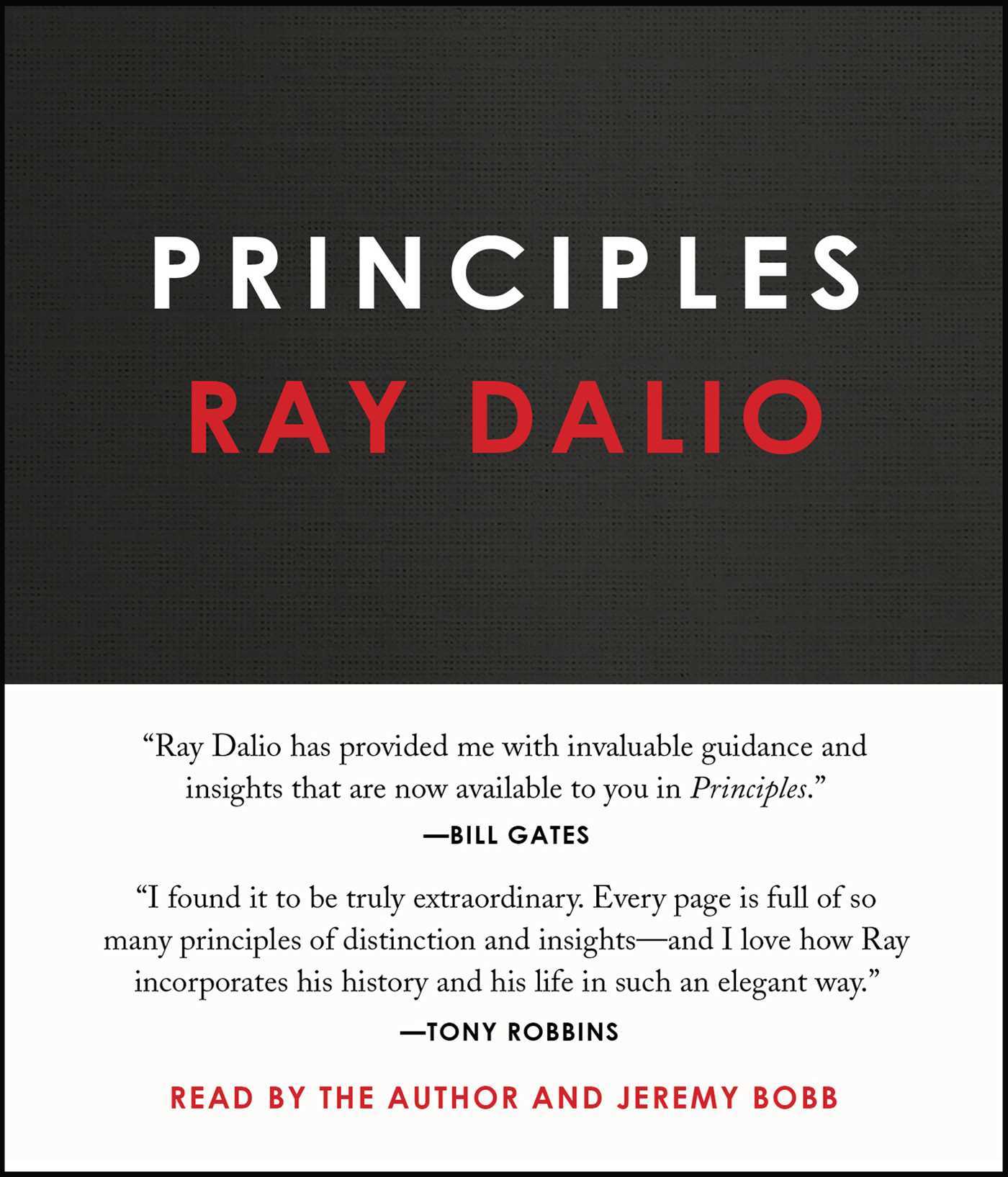
Management
Leadership
Communication
Business
Radical Candor Book Summary
Kim Malone Scott
Radical Candor is a management philosophy that emphasizes caring personally about your team while also challenging them directly, creating a culture of feedback, trust and high performance.
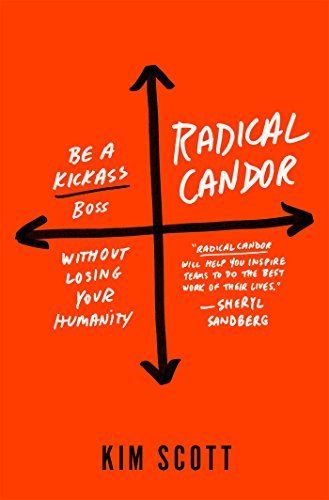
Management
Leadership
Business
Entrepreneurship
Start With Why Book Summary
Simon Sinek
Start with Why offers a powerful framework for how leaders and organizations can inspire others, build trust and loyalty, and achieve long-term success by clearly articulating and staying true to their purpose, cause or belief.
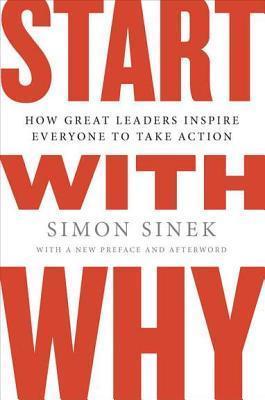
Psychology
Business
Sociology
David and Goliath Book Summary
Malcolm Gladwell
In David and Goliath, Malcolm Gladwell challenges our assumptions about power, advantage, and success, showing how underdogs can triumph by turning their weaknesses into strengths and exploiting the hidden vulnerabilities of the powerful.

Business
Management
Technology
Crossing the Chasm Book Summary
Geoffrey Moore
"Crossing the Chasm" unveils the hidden challenges of launching disruptive technologies and provides a proven roadmap for navigating the treacherous gap between early adopters and mainstream markets, enabling companies to achieve market leadership and sustainable growth.
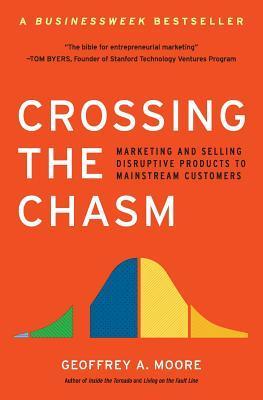
Business
Strategy
Product Management
Blue Ocean Strategy Book Summary
W. Chan Kim and Renee Mauborgne
Forget battling sharks in bloody red oceans. Blue Ocean Strategy shows you how to create your own uncontested market space, making the competition irrelevant and opening a sea of opportunities for profitable growth.

Business
Entrepreneurship
Leadership
Personal Development
Company Of One Book Summary
Paul Jarvis
In "Company of One," Paul Jarvis makes a compelling case for staying small and questioning growth in business, arguing that by staying lean, agile, and customer-focused, you can build a sustainable and fulfilling business on your own terms.

Business
Personal Development
Psychology
Hidden Potential Book Summary
Adam Grant
Unlock the secrets of hidden potential and embark on a journey of personal and collective growth. "Hidden Potential" reveals the science of achieving greater things, offering practical strategies and inspiring stories to help you and those around you reach new heights.
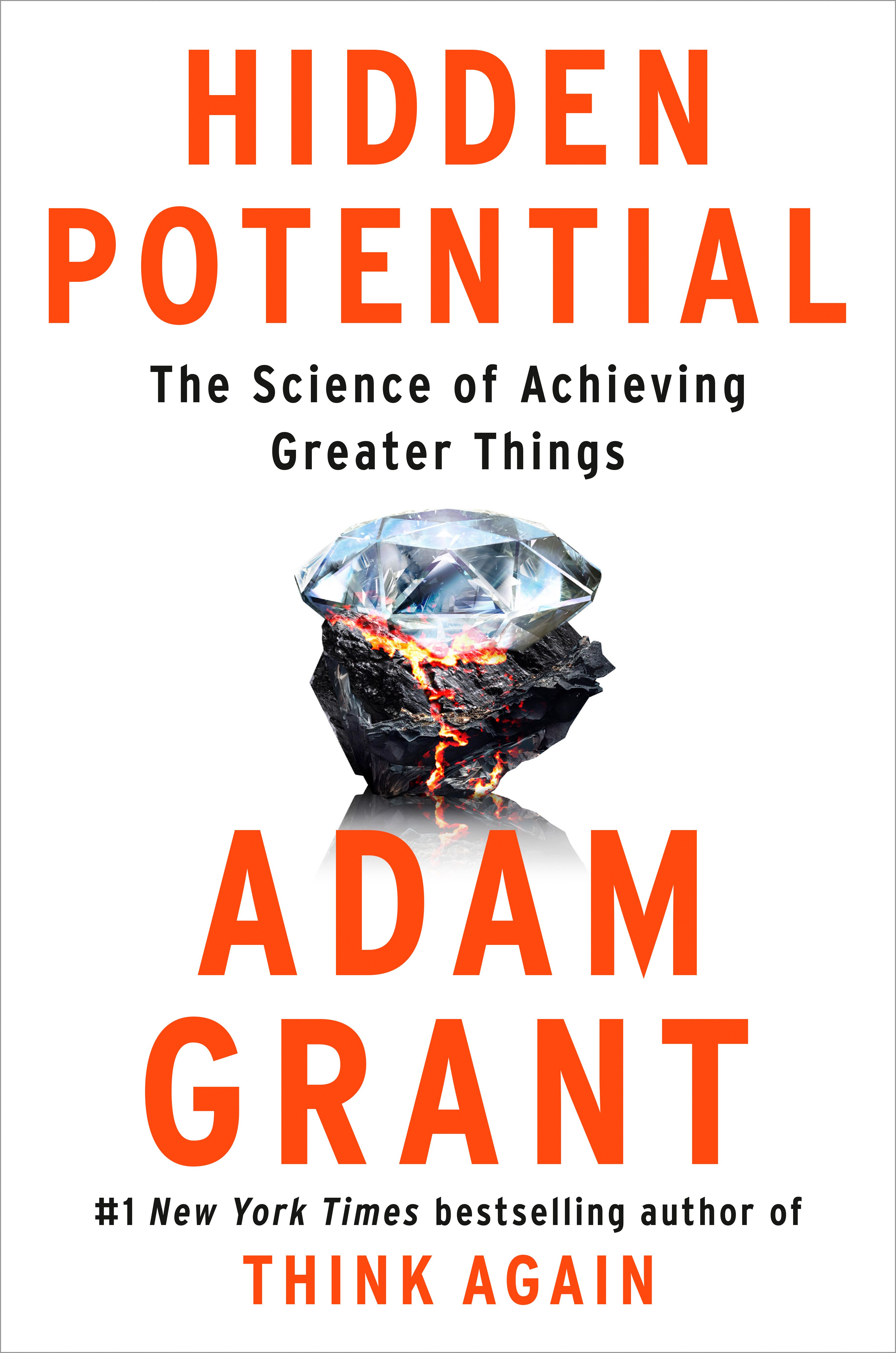
Psychology
Neuroscience
Business
Subliminal Book Summary
Leonard Mlodinow
Subliminal: How Your Unconscious Mind Rules Your Behavior reveals the powerful influence of the unconscious mind on our thoughts, feelings, and actions - from how we perceive the world, to how we interact with others, make decisions, and understand ourselves.

Entrepreneurship
Business
Management
Technology
Zero to One Book Summary
Peter Thiel
Zero to One is a contrarian and insightful guide to creating the future through building innovative companies that escape competition and push technology forward.
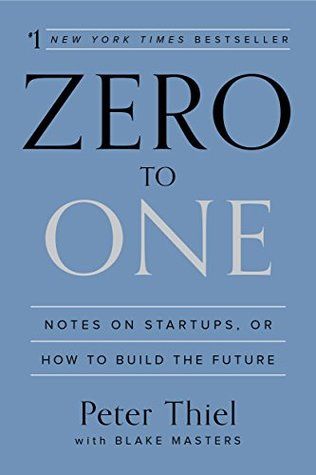
Business
Entrepreneurship
Management
Productivity
Rework Book Summary
Jason Fried, David Heinemeier Hansson
"Rework" challenges conventional wisdom on building businesses, offering a simpler, faster, more direct approach to succeeding by staying small, nimble, and true to yourself.
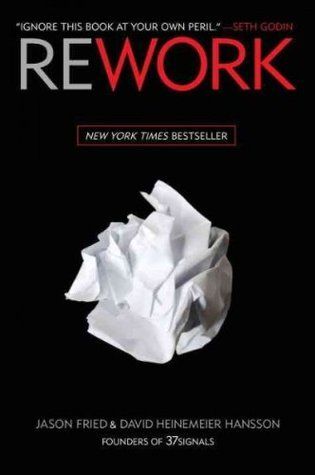
Personal Development
Self-Help
Feel The Fear And Do It Anyway Book Summary
Susan Jeffers
In "Feel the Fear and Do It Anyway," Susan Jeffers empowers readers to overcome their fears by shifting their mindset, embracing uncertainty, and taking bold action in the direction of their dreams.
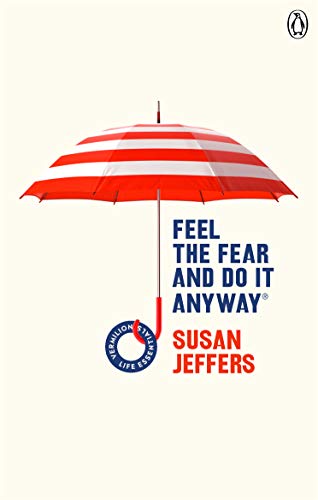
Self-Help
Psychology
Leadership
Business
Communication
Super Communicators Book Summary
Charles Duhigg
Who and what are supercommunicators? They're the people who can steer a conversation to a successful conclusion. They are able to talk about difficult topics without giving offence. They're brilliant facilitators and decision-guiders. How do they do it?
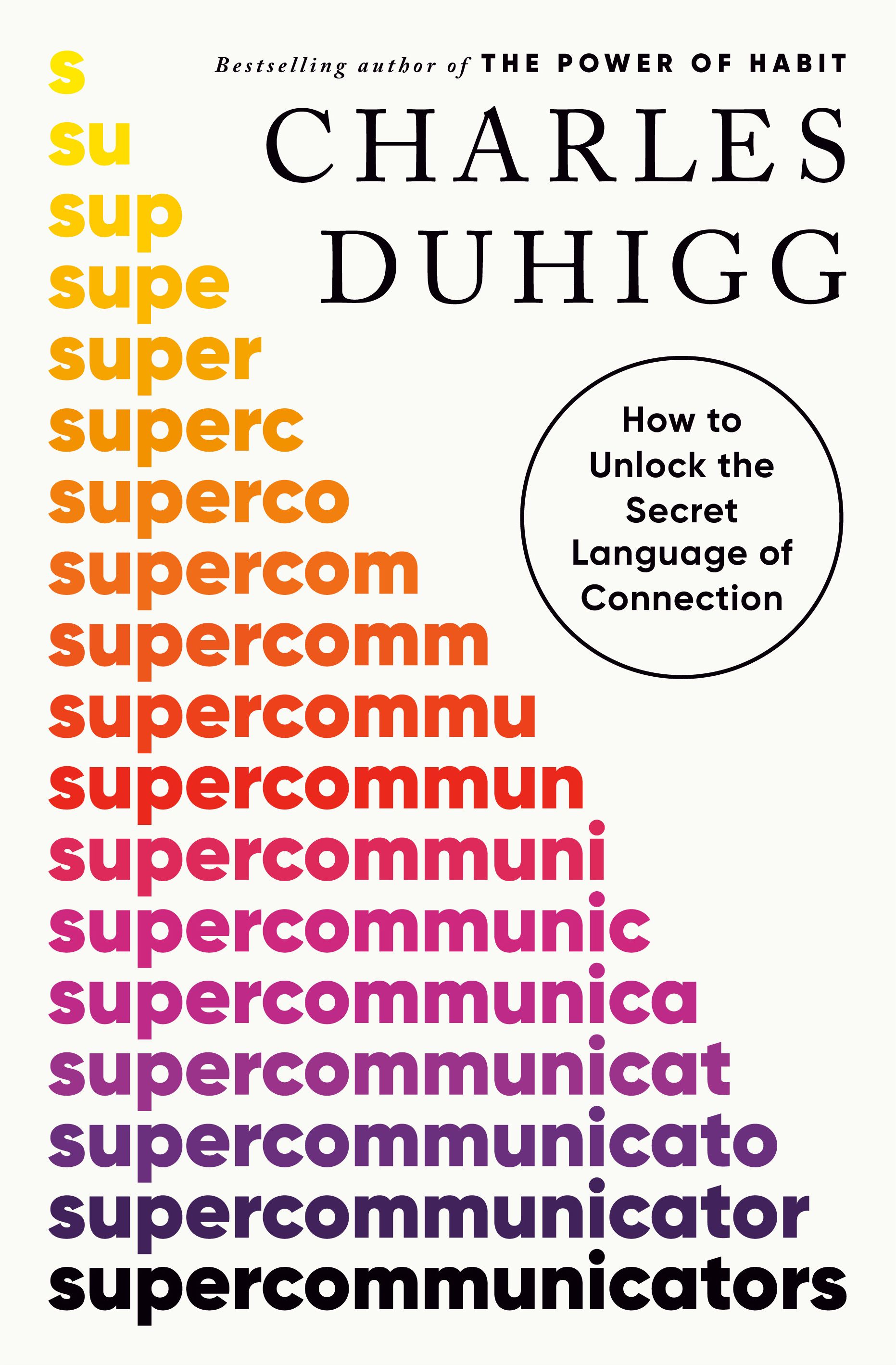
Psychology
Economics
Statistics
Heuristics
The Drunkard's Walk Book Summary
Leonard Mlodinow
"The Drunkard's Walk" reveals how randomness and chance play a far greater role in our lives than we typically realize, challenging our perceptions of success, decision-making, and the patterns we think we see in the world around us.

Management
Leadership
Business
Strategy
Team of Teams Book Summary
Stanley McChrystal
In Team of Teams, General Stanley McChrystal shares powerful lessons on how organizations can adapt and succeed in complex, rapidly changing environments by breaking down silos, empowering teams, and fostering a culture of trust, transparency, and decentralized decision-making.
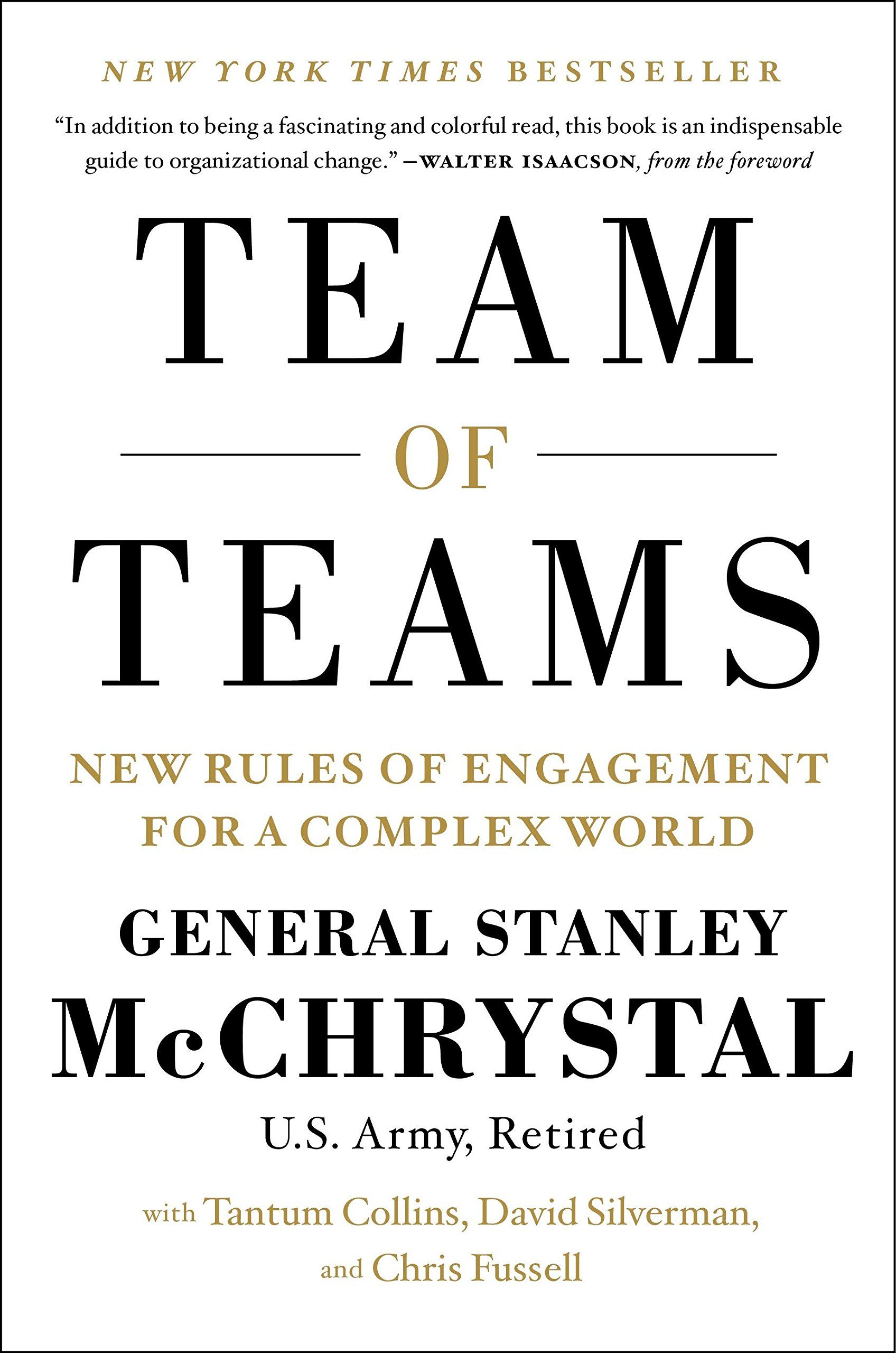
History
Innovation
Science
Where Good Ideas Come From Book Summary
Steven Johnson
Steven Johnson argues that breakthrough innovations arise from connected environments that enable the serendipitous collision of slow hunches, happy accidents, and novel combinations of existing ideas, rather than isolated eureka moments of lone genius.
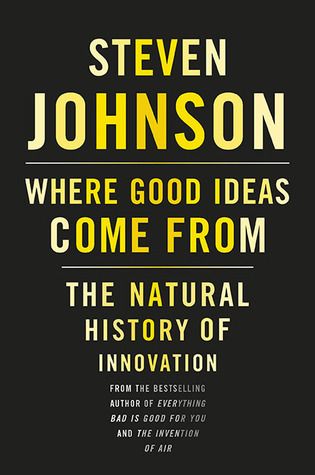
Leadership
Feminism
Business
Biography
Lean In Book Summary
Sheryl Sandberg
In Lean In, Sheryl Sandberg examines the barriers women face in achieving leadership roles and offers compelling, research-based advice on what women can do to overcome these obstacles and achieve their full potential in both their professional and personal lives.

Psychology
Innovation
Business
Leadership
Rebel Ideas Book Summary
Matthew Syed
Matthew Syed reveals the vital ingredient missing from our understanding of success: cognitive diversity. Rebel Ideas shows how bringing together different insights, perspectives and thinking styles turbocharges creativity, problem-solving and decision-making, to improve performance in today's complex world.
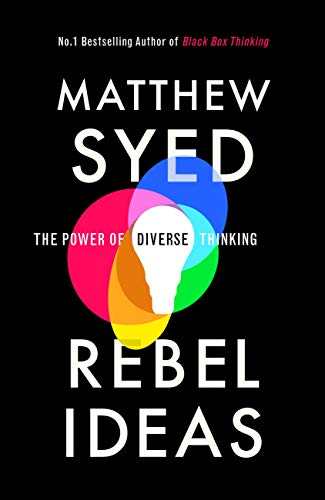
Business
Management
Leadership
Culture
Organization
Human Behavior
No Rules Rules Book Summary
Reed Hastings, Erin Meyer
Unlock the secrets behind Netflix's phenomenal success with 'No Rules Rules'. Discover how a culture built on talent density, radical candor, and removing controls fuels innovation, speed, and adaptability in the face of constant change.

Psychology
Business
Personal Development
Think Again Book Summary
Adam Grant
Think Again is a compelling exploration of the power of knowing what you don't know, and how embracing the joy of being wrong and actively questioning your opinions can help you make better decisions

The Black Swan Book Summary
Nassim Nicholas Taleb
The Black Swan is about the extreme impact of rare and unpredictable outlier events, and how we tend to find simplistic explanations for them after the fact, making us blind to randomness and vulnerable to future Black Swans.
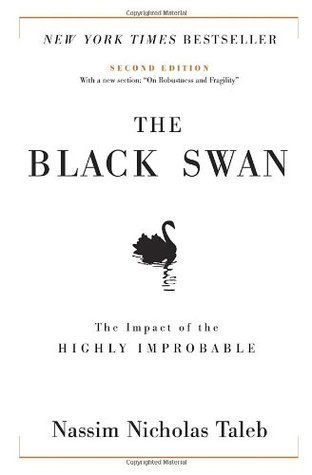
Marketing
Entrepreneurship
Business
The 1-Page Marketing Plan Book Summary
Allan Dib
"The 1-Page Marketing Plan" by Allan Dib is the ultimate playbook for crafting a simple yet powerful marketing strategy that consistently attracts, converts and retains highly profitable customers. By distilling key direct response principles onto a single page, any business can create an actionable roadmap for achieving rapid, sustainable growth without the overwhelm.
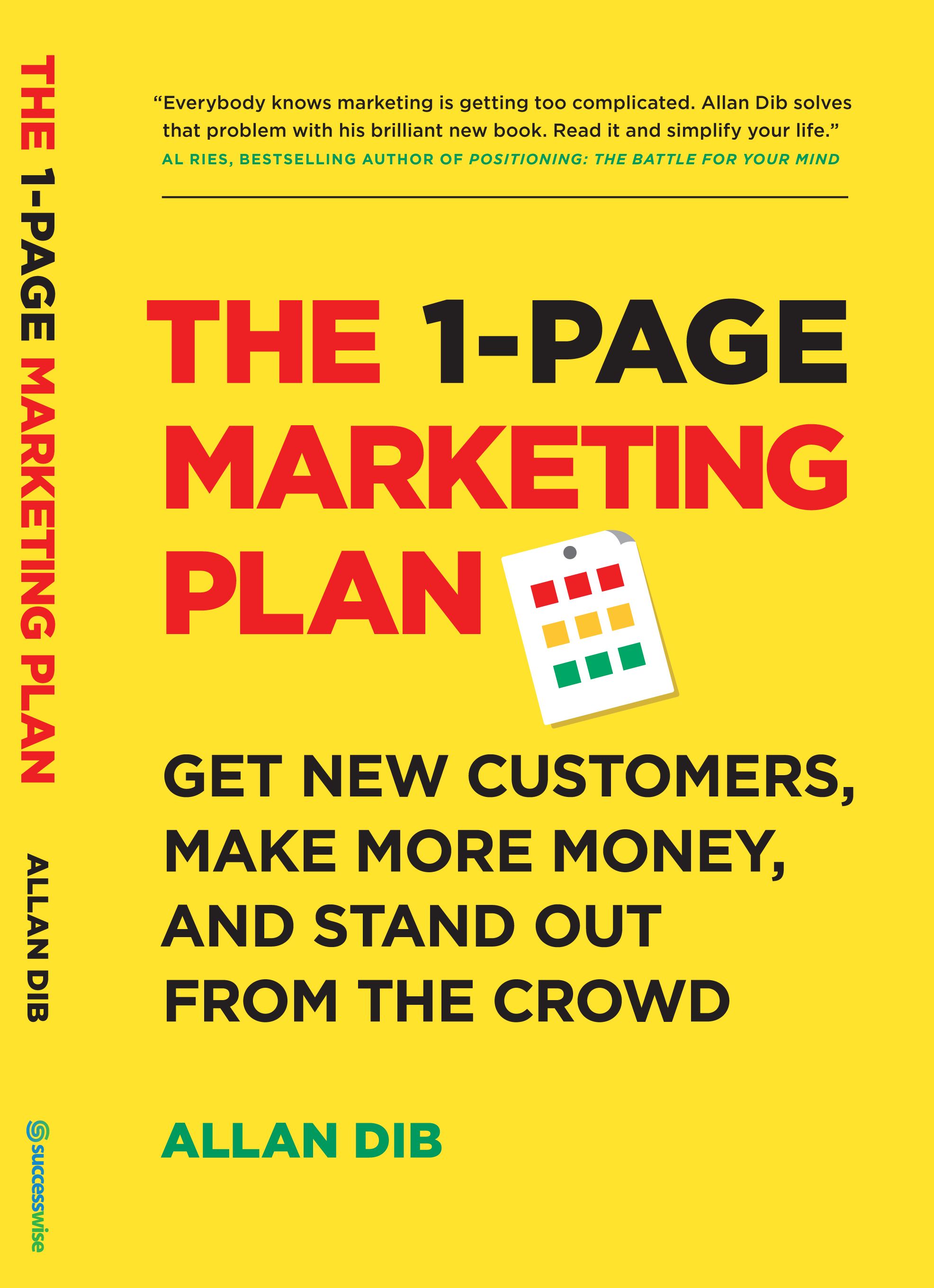
Personal Development
Money
Psychology
The 5 Types of Wealth Book Summary
Sahil Bloom
After three years of research, personal experimentation, and thousands of interviews across the globe, Sahil Bloom has created a groundbreaking blueprint to build your life around five types of wealth: Time Wealth, Social Wealth, Mental Wealth, Physical Wealth, and Financial Wealth.

Management
Entrepreneurship
Business
Product Management
Hacking Growth Book Summary
Sean Ellis
Hacking Growth reveals the revolutionary growth hacking techniques used by today's fastest-growing companies to drive breakout success - and shows you exactly how to implement them in your own organization.

Business
Innovation
Management
The Innovator's Dilemma Book Summary
Clayton M. Christensen
"The Innovator's Dilemma" unveils a paradoxical truth: successful companies are often perfectly positioned to fail. Established firms can become blindsided by disruptive technologies that reshape industries. This book offers a framework for navigating these disruptive threats, urging companies to embrace new market opportunities and transform themselves to thrive in the face of inevitable change.

Economics
Decision Making
Prediction
Game Theory
On The Edge Book Summary
Nate Silver
"On the Edge" takes readers on a captivating journey through the high-stakes world of poker, sports betting, and risk-taking, revealing the counterintuitive strategies and mental habits that allow gamblers and daredevils to thrive in the face of daunting odds.
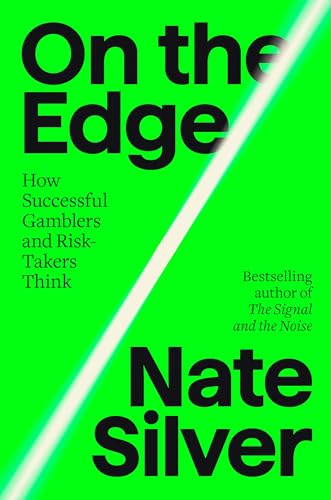
Persuasion
Communication
Business
Psychology
Influence Book Summary
Robert Cialdini
Influence is the quintessential guide to the six universal principles of persuasion - reciprocation, commitment and consistency, social proof, authority, liking, and scarcity - that shape our decisions and behavior, often without our conscious awareness.
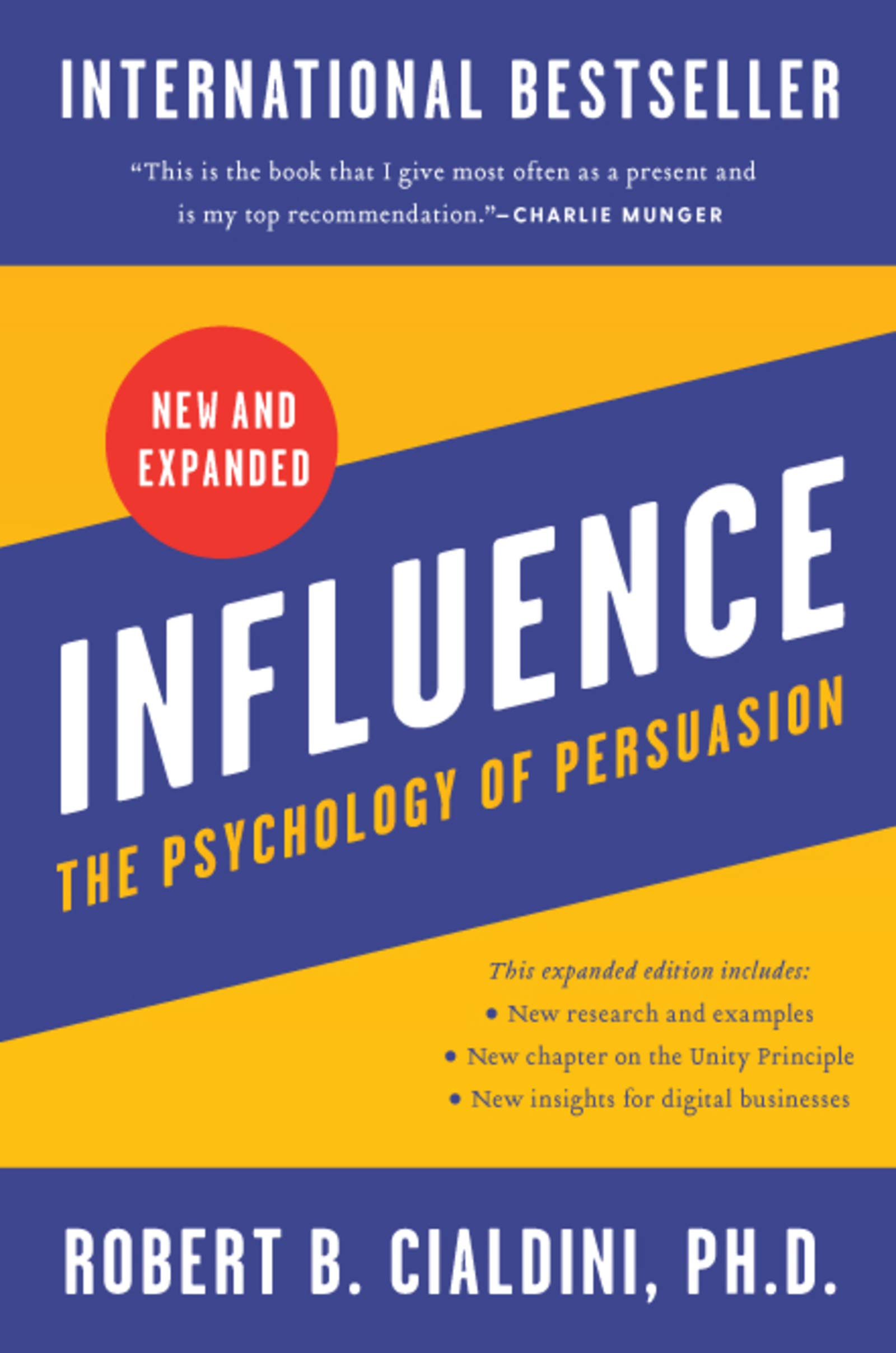
Management
Entrepreneurship
Leadership
Business
The Lean Startup Book Summary
Eric Ries
The Lean Startup offers a scientific approach to creating and managing startups and getting a desired product to customers' hands faster, based on validated learning, rapid experimentation, and counterintuitive practices that shorten product development cycles, measure actual progress, and learn what customers really want.
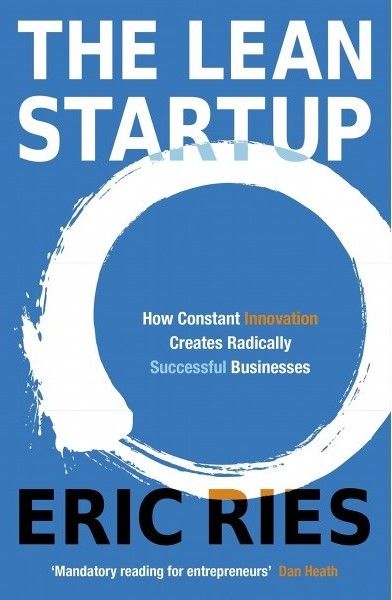
Business
Management
Leadership
Entrepreneurship
Measure What Matters Book Summary
John Doerr
Measure What Matters is the essential guide for using Objectives and Key Results (OKRs) to drive focus, alignment, and extraordinary performance at every level of your organization.

Leadership
Management
Business
The Culture Code Book Summary
Daniel Coyle
The Culture Code reveals the secrets of highly successful groups, showing that the key to unleashing a team's full potential lies in creating a culture of safety, shared vulnerability, and purpose.



